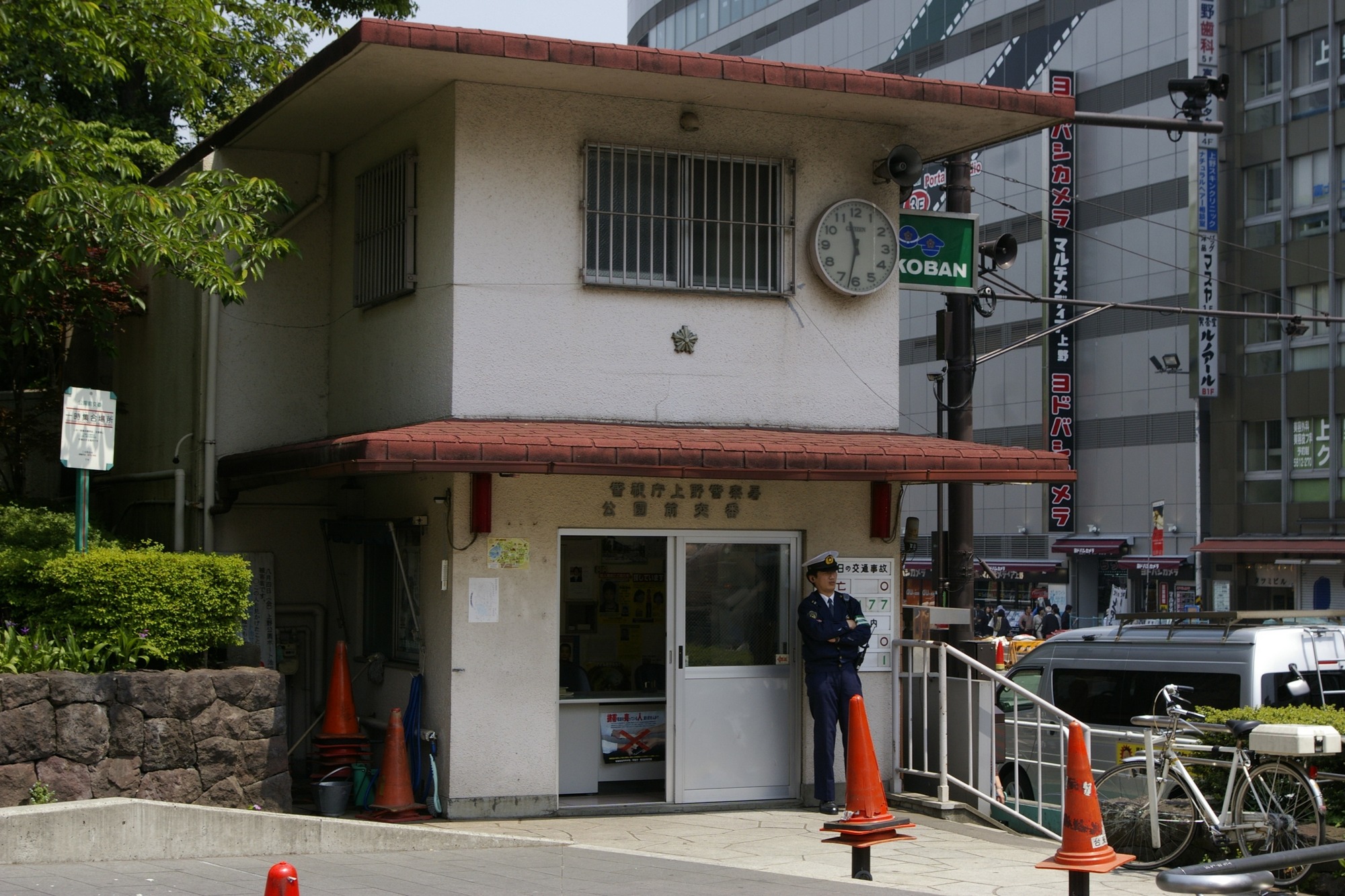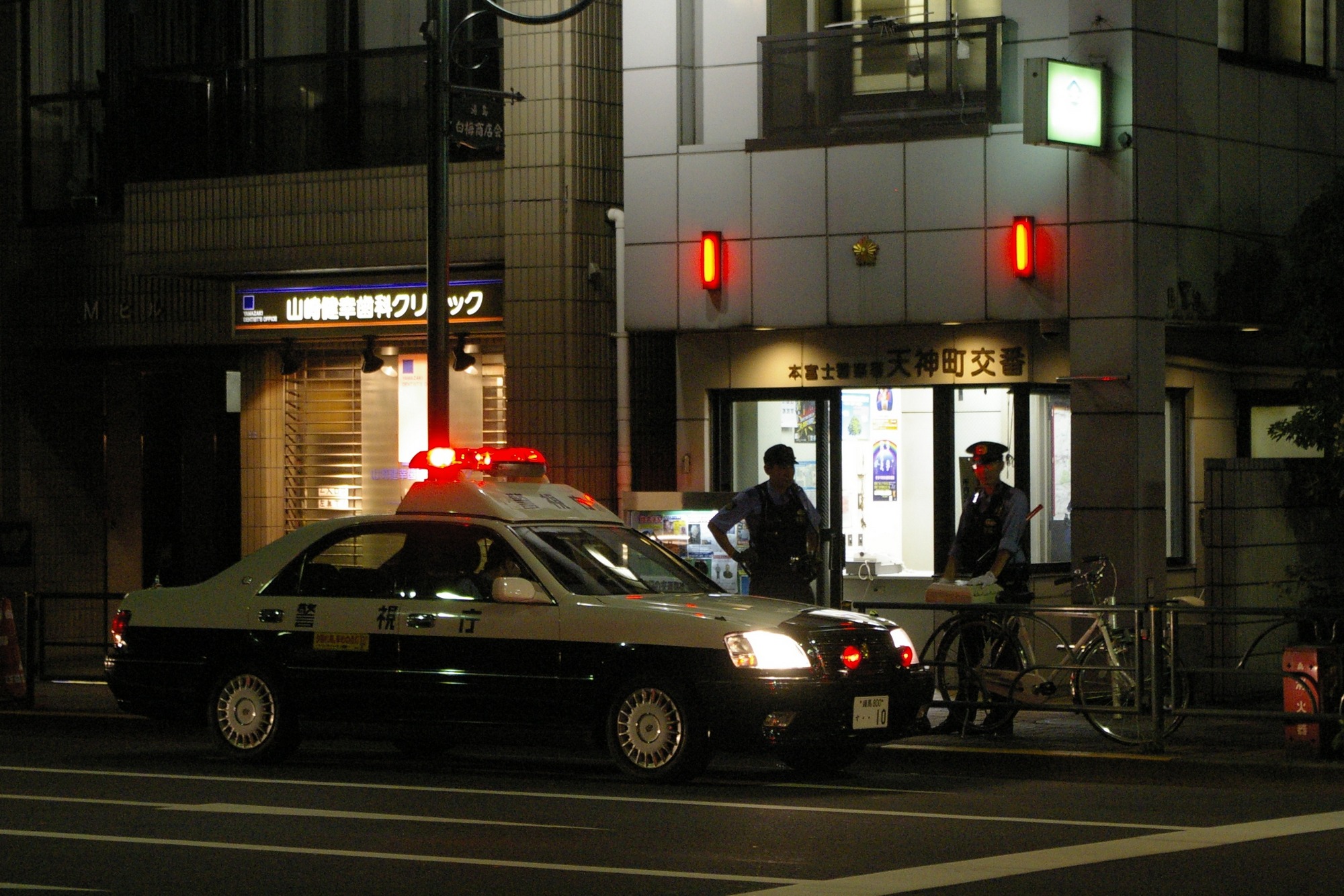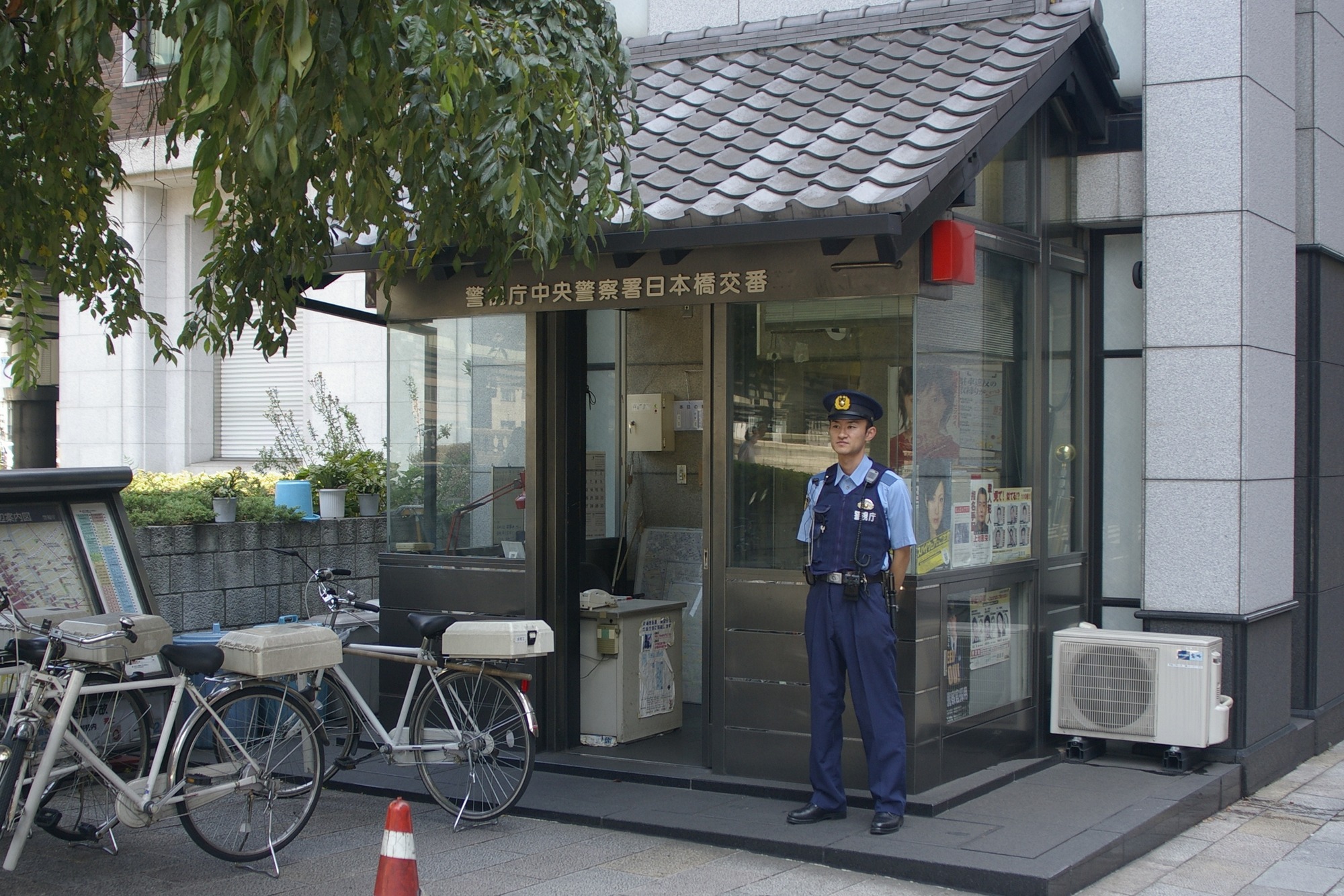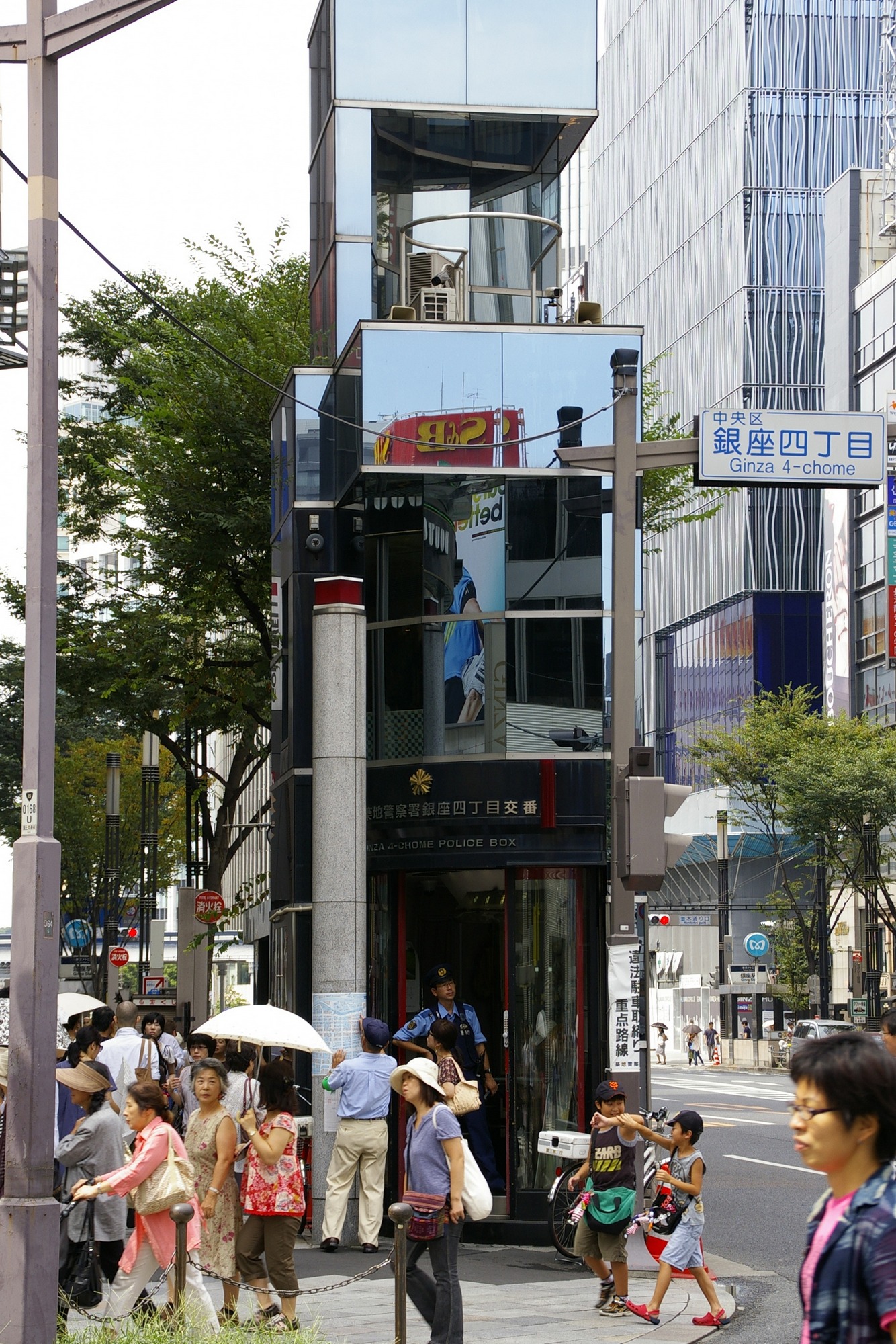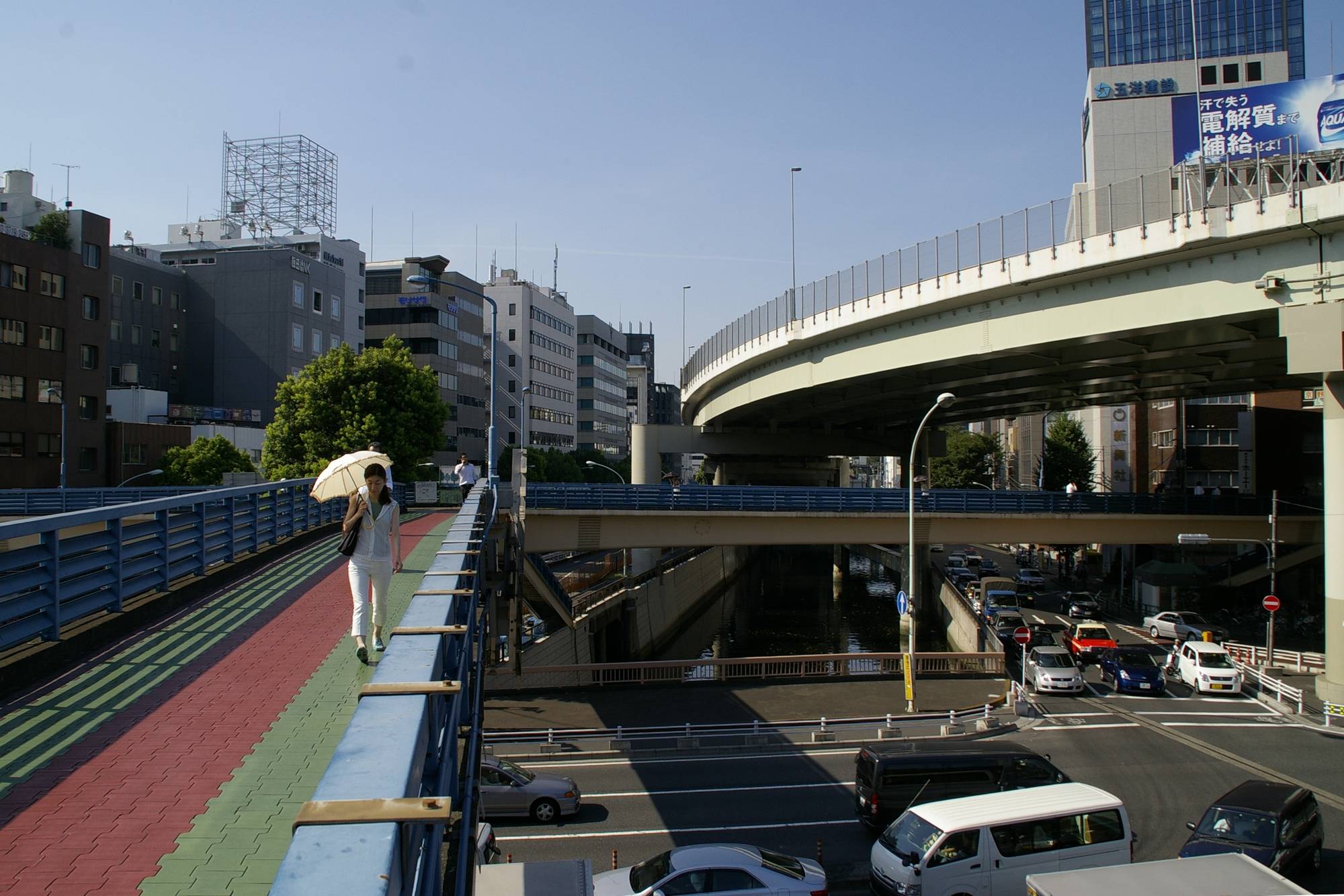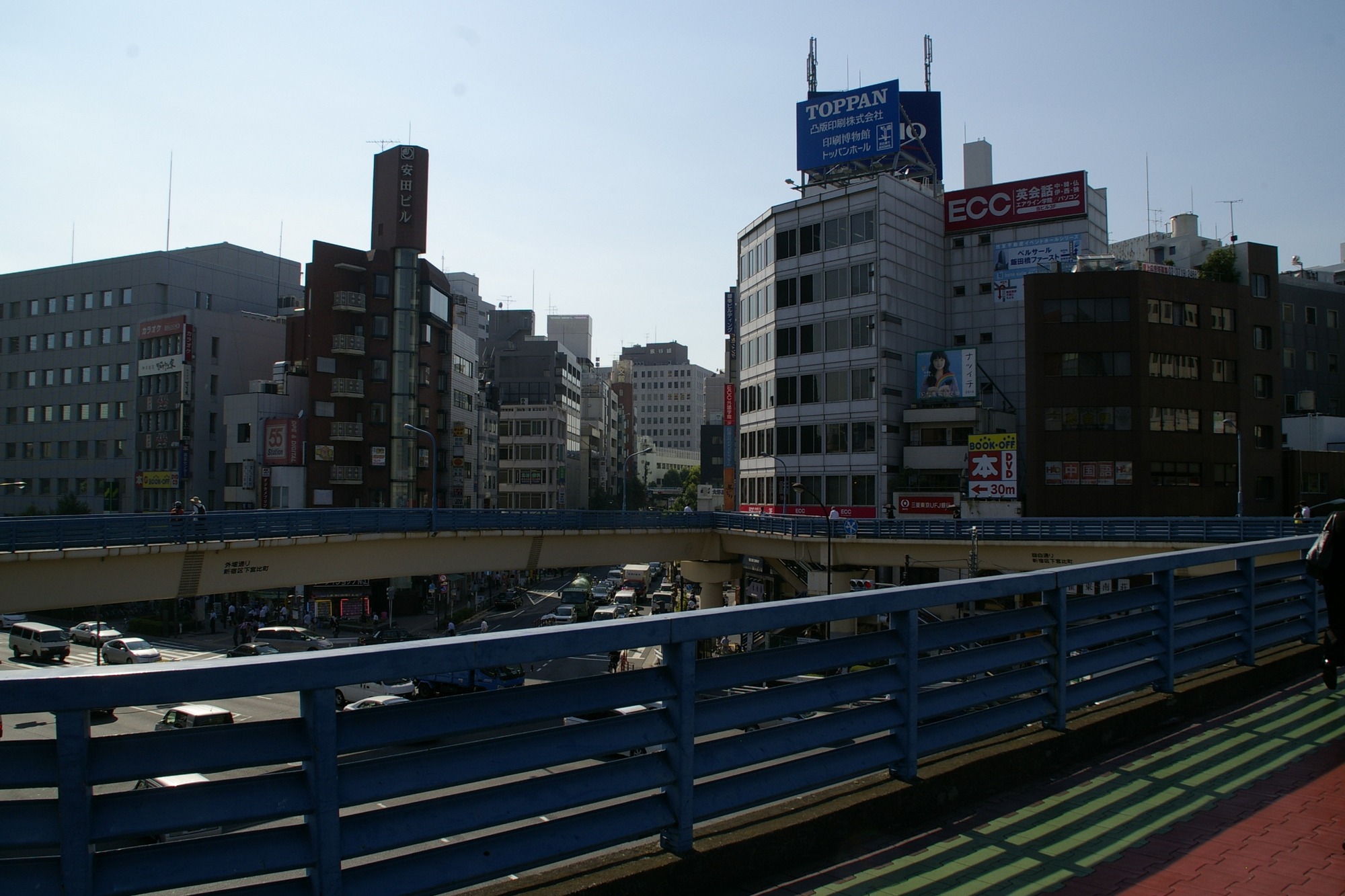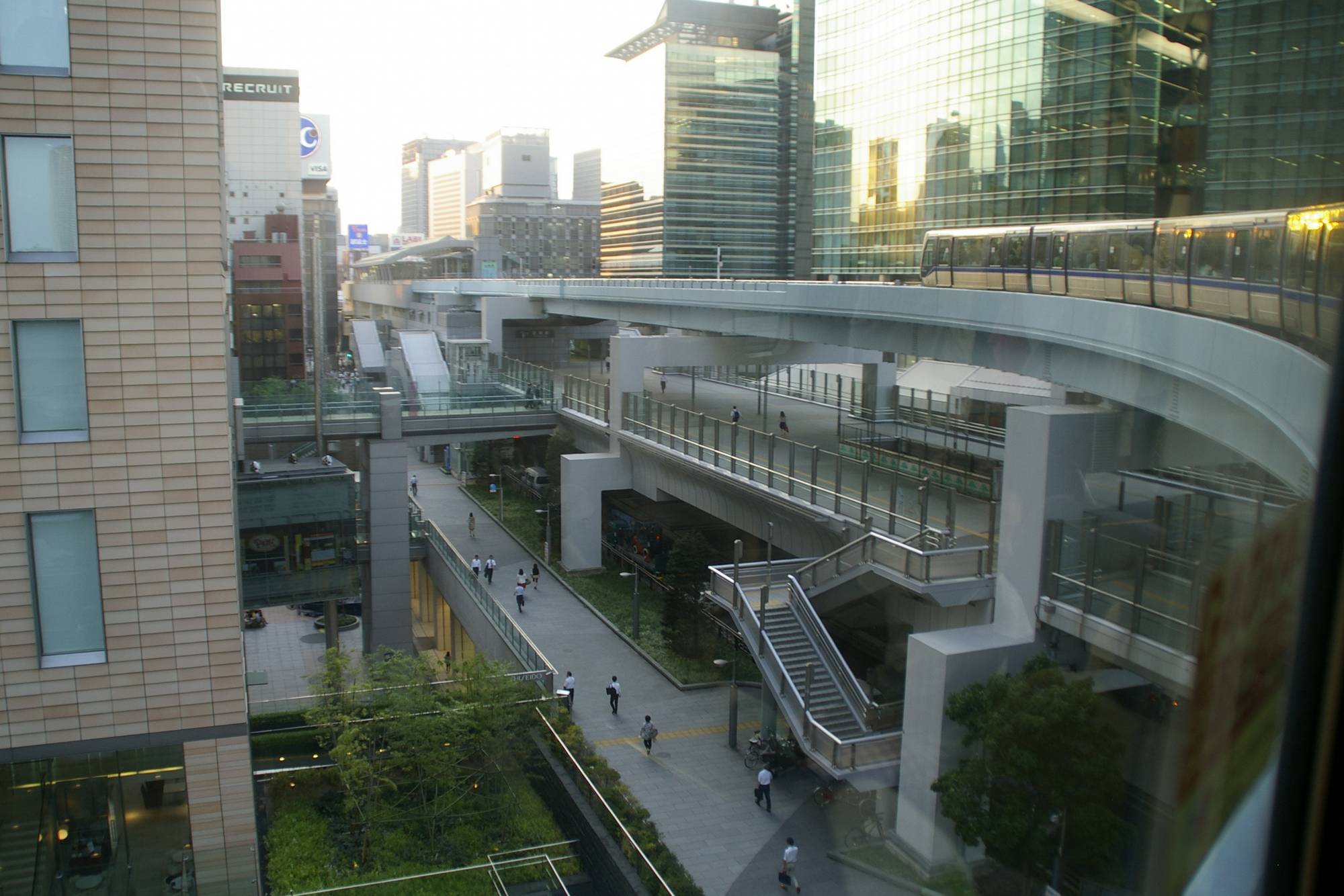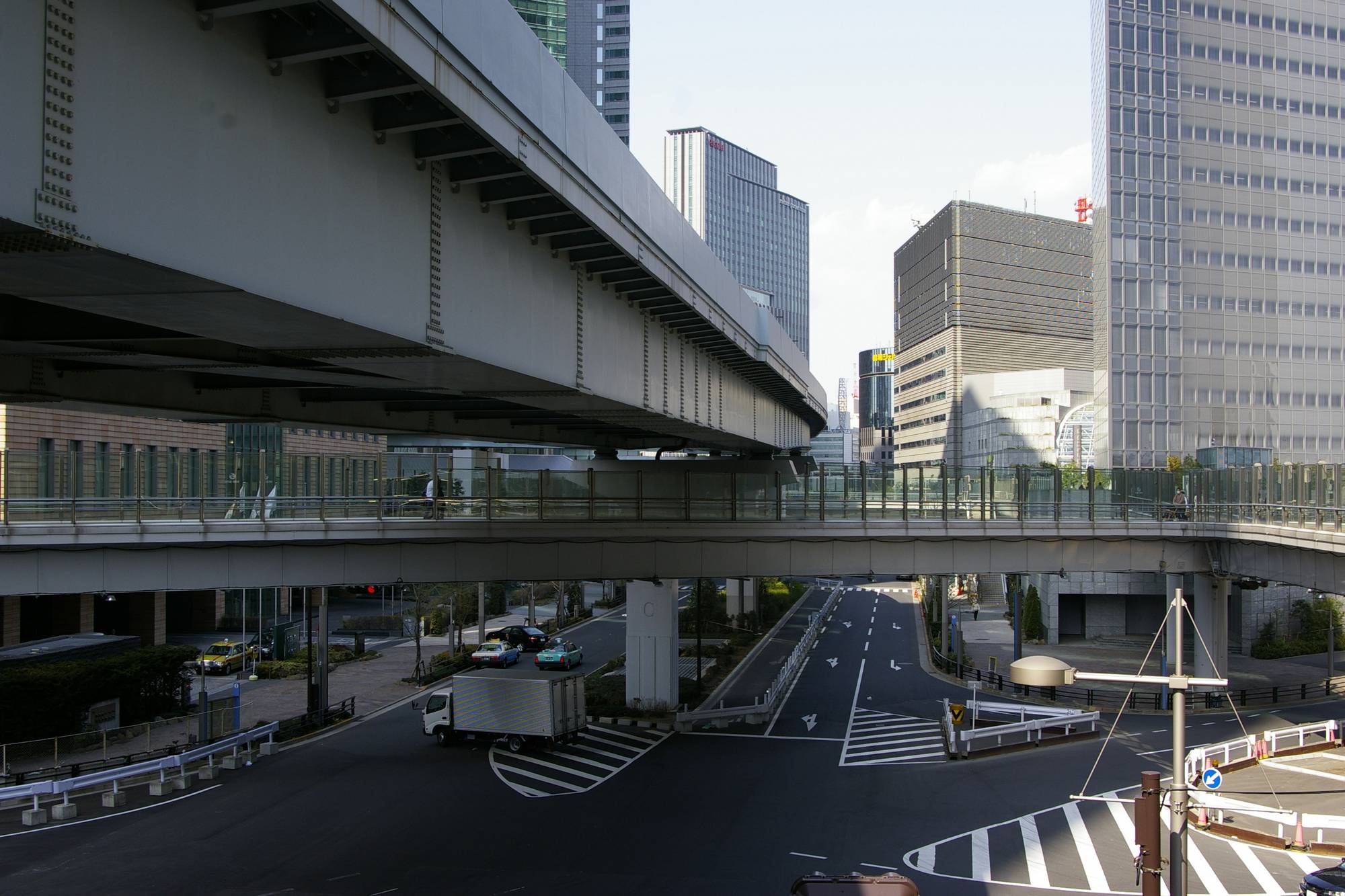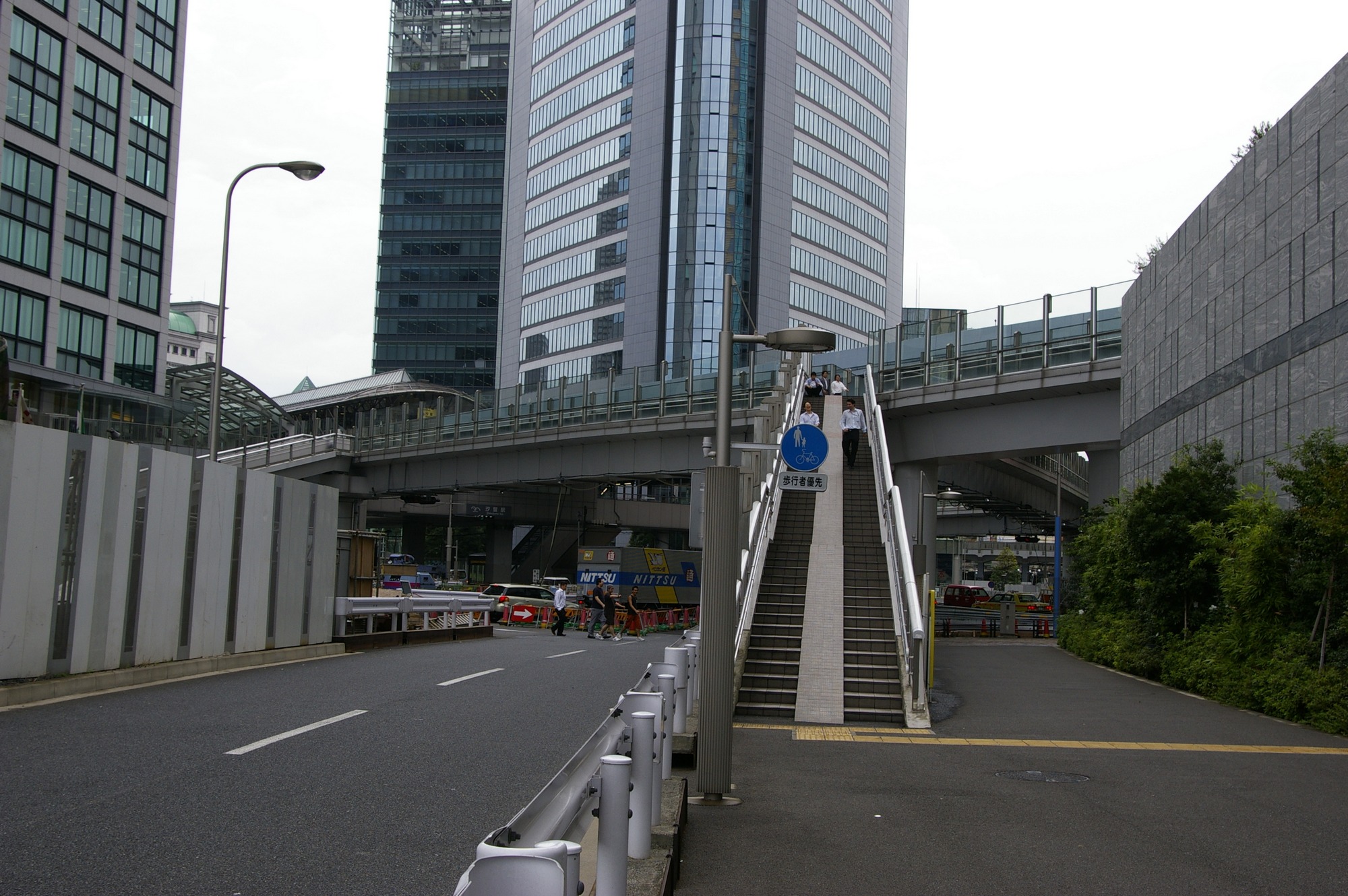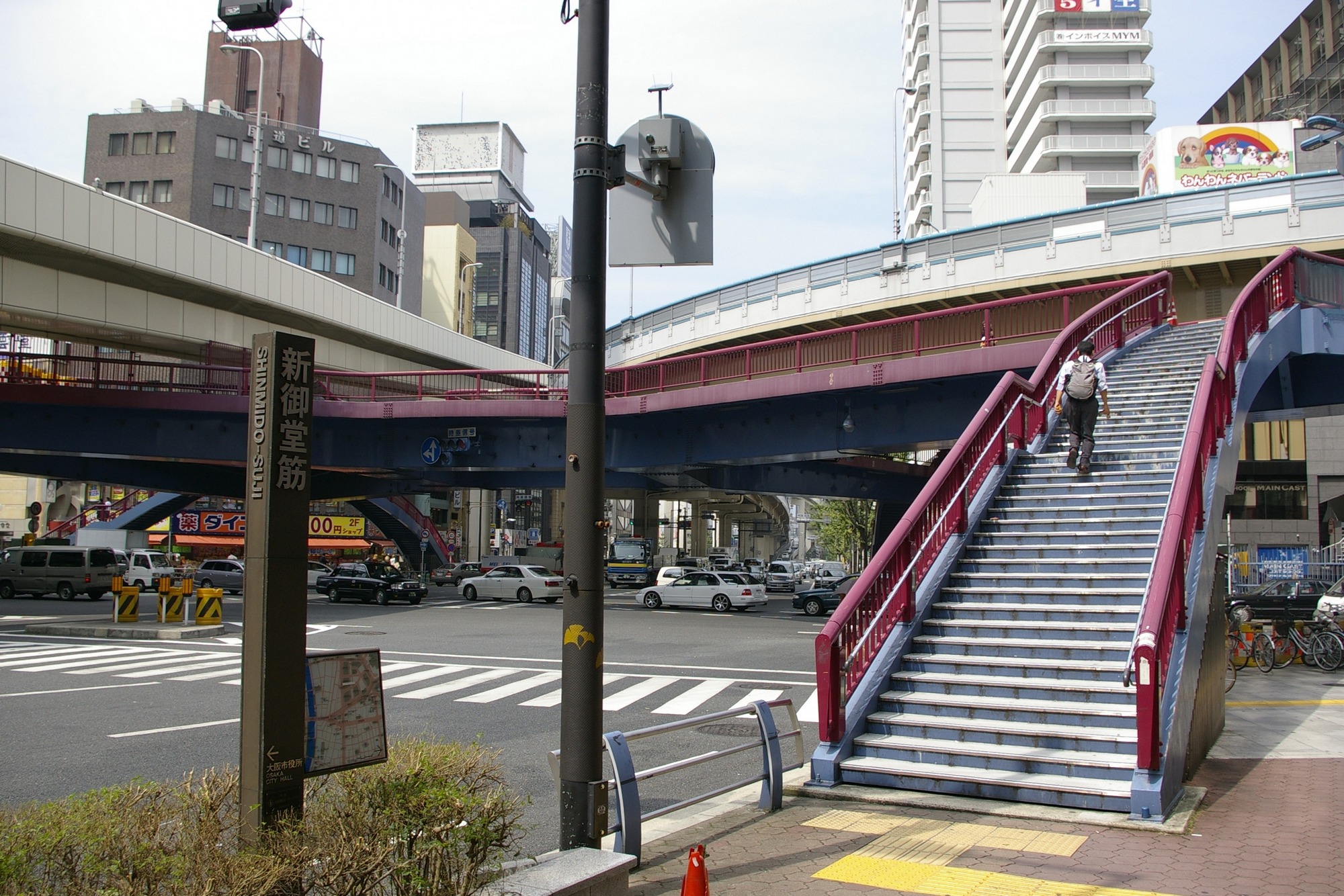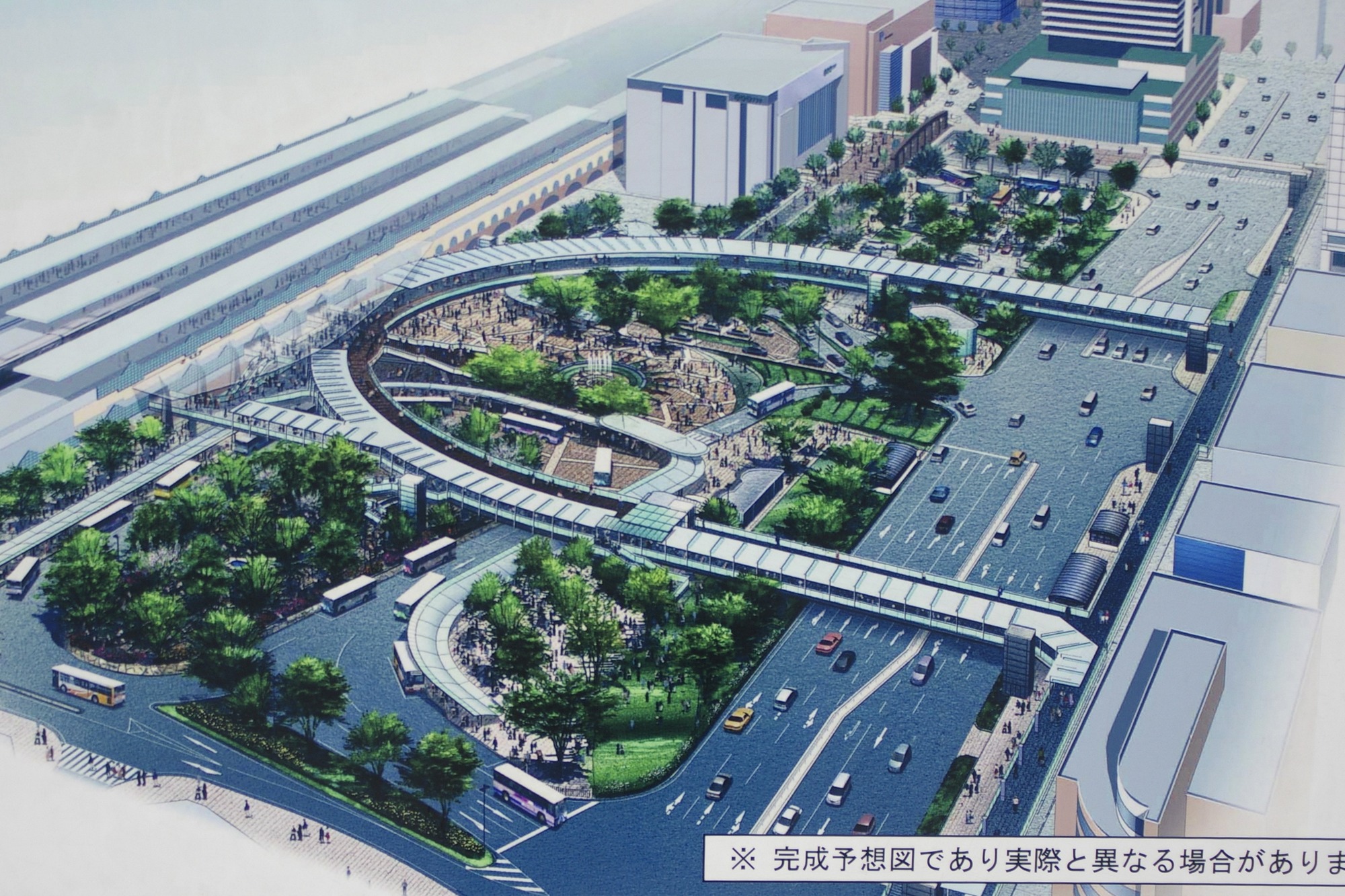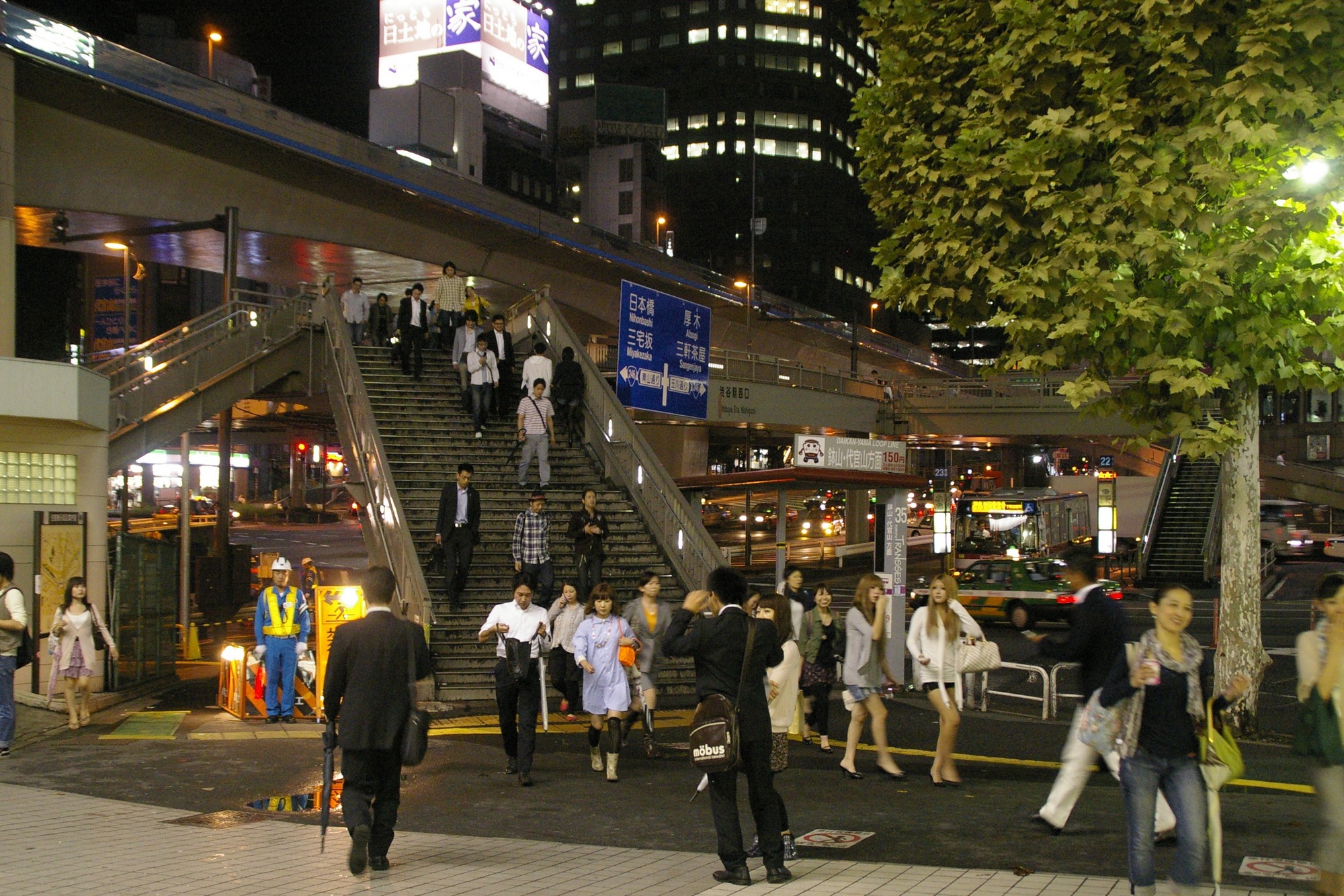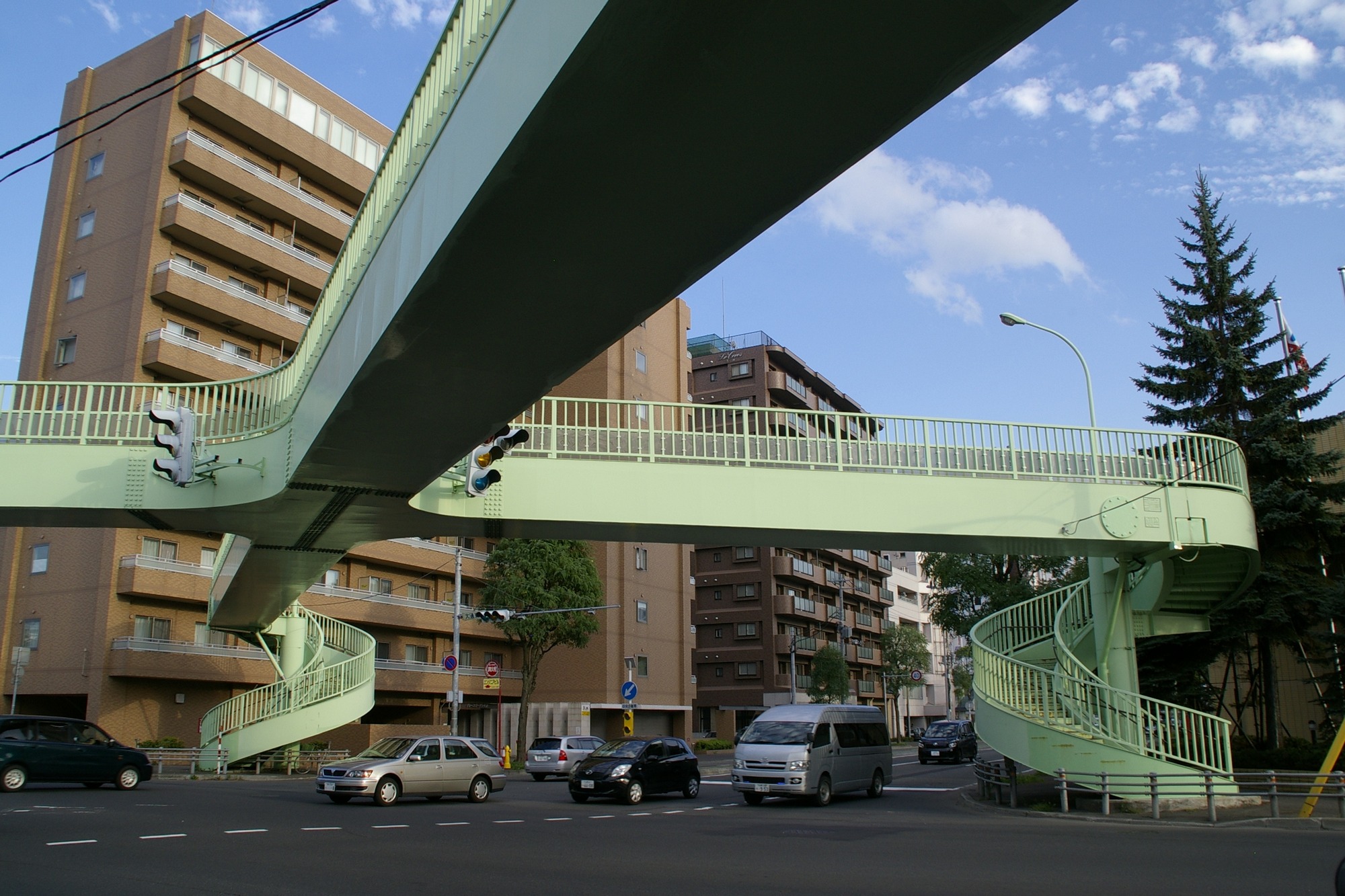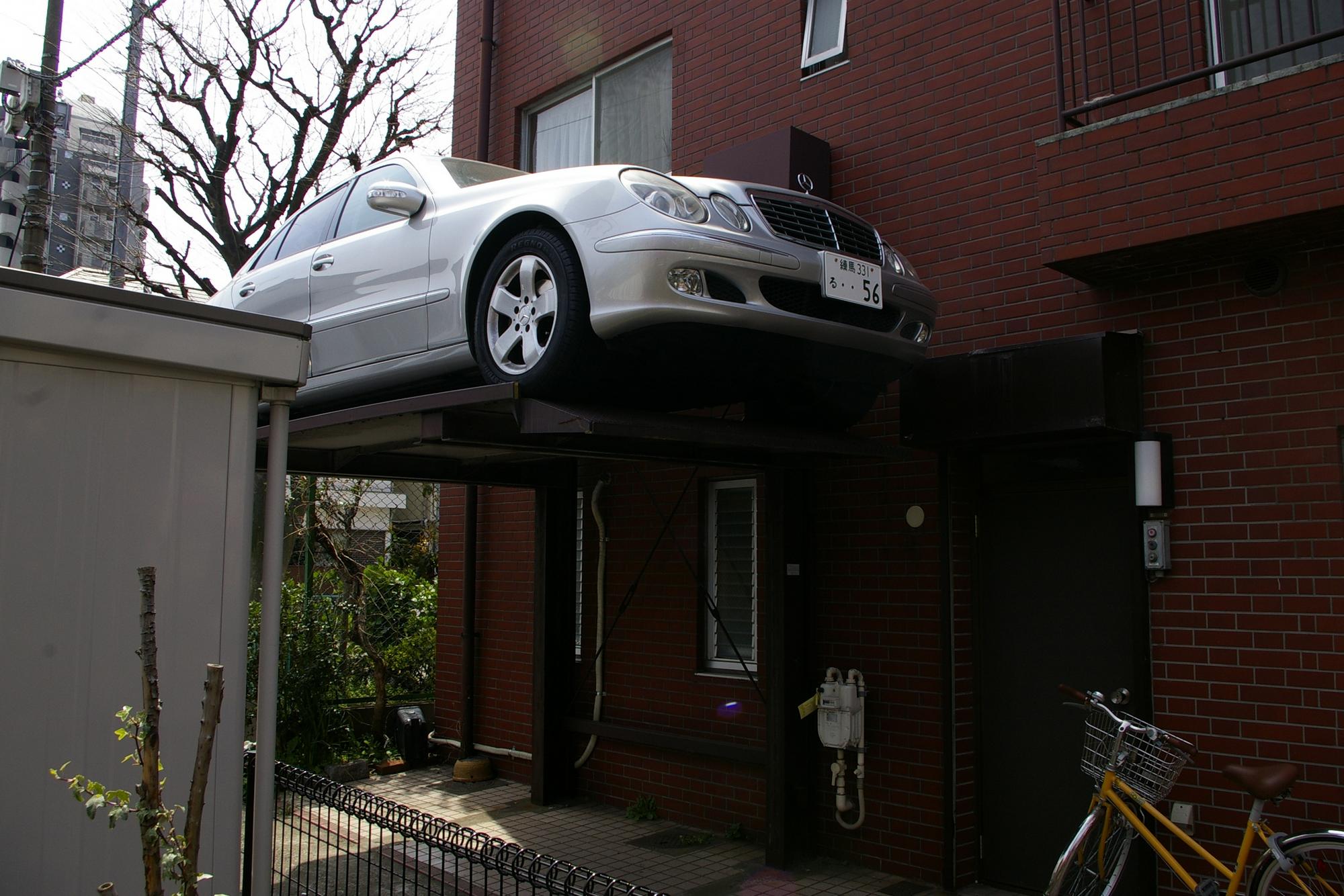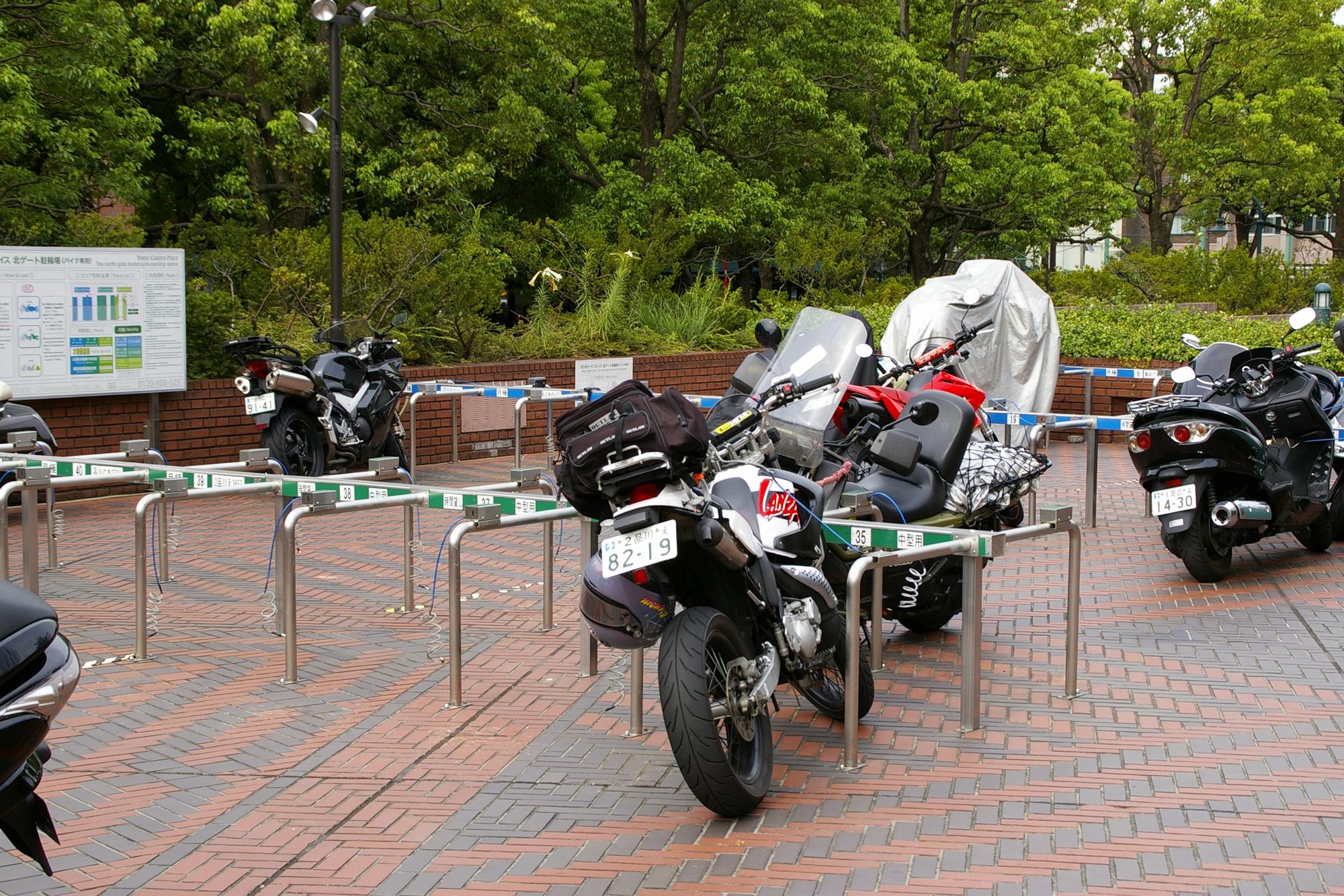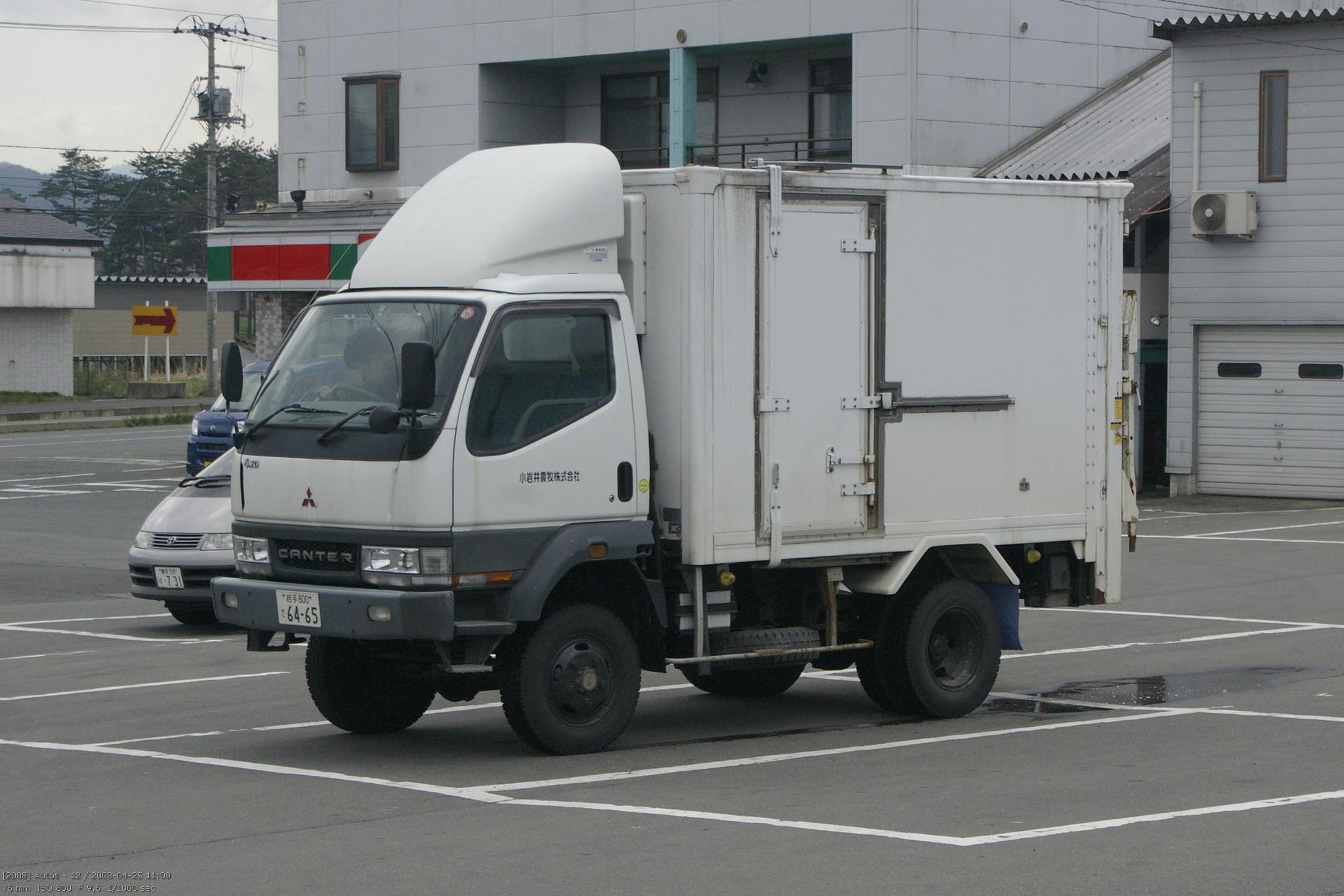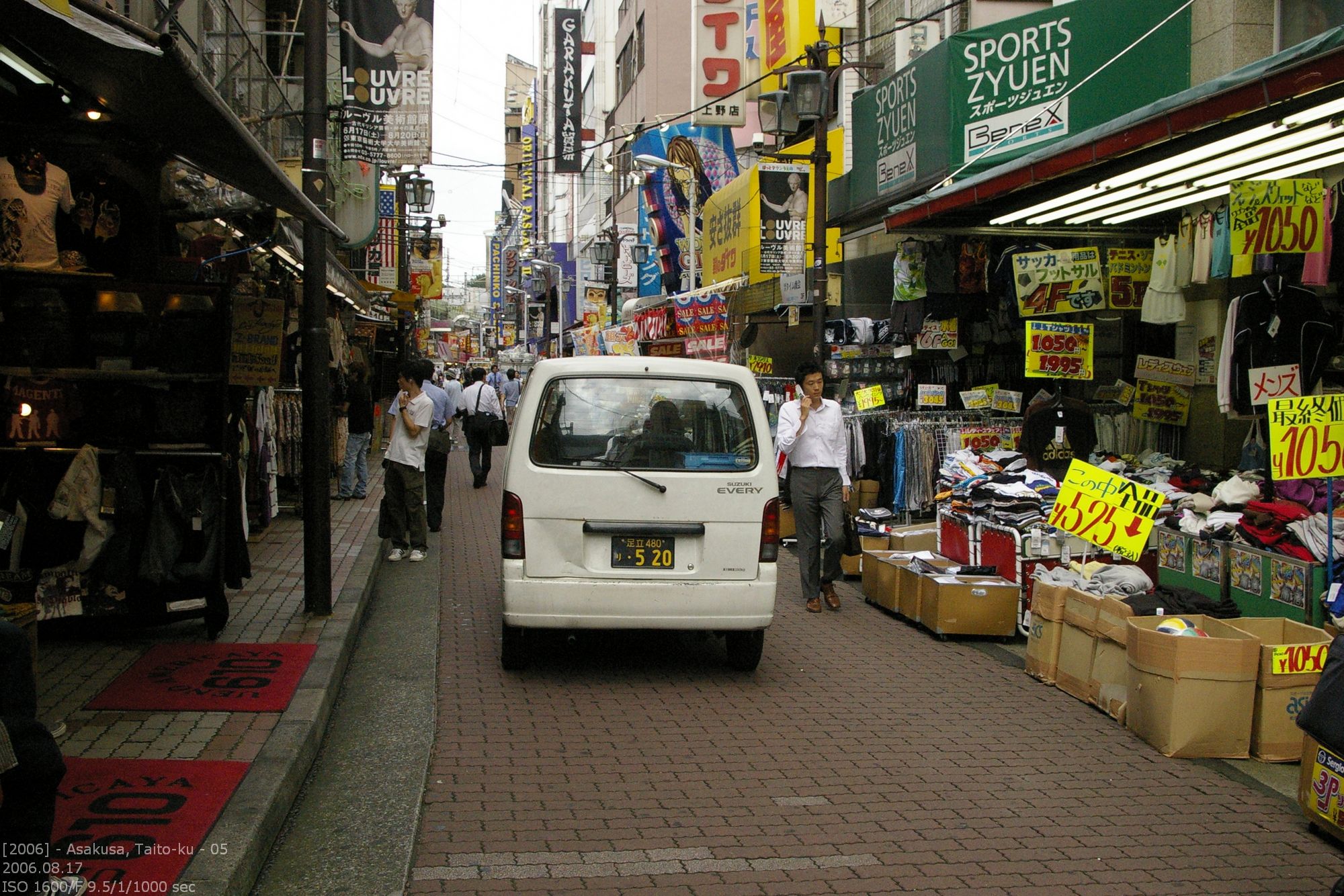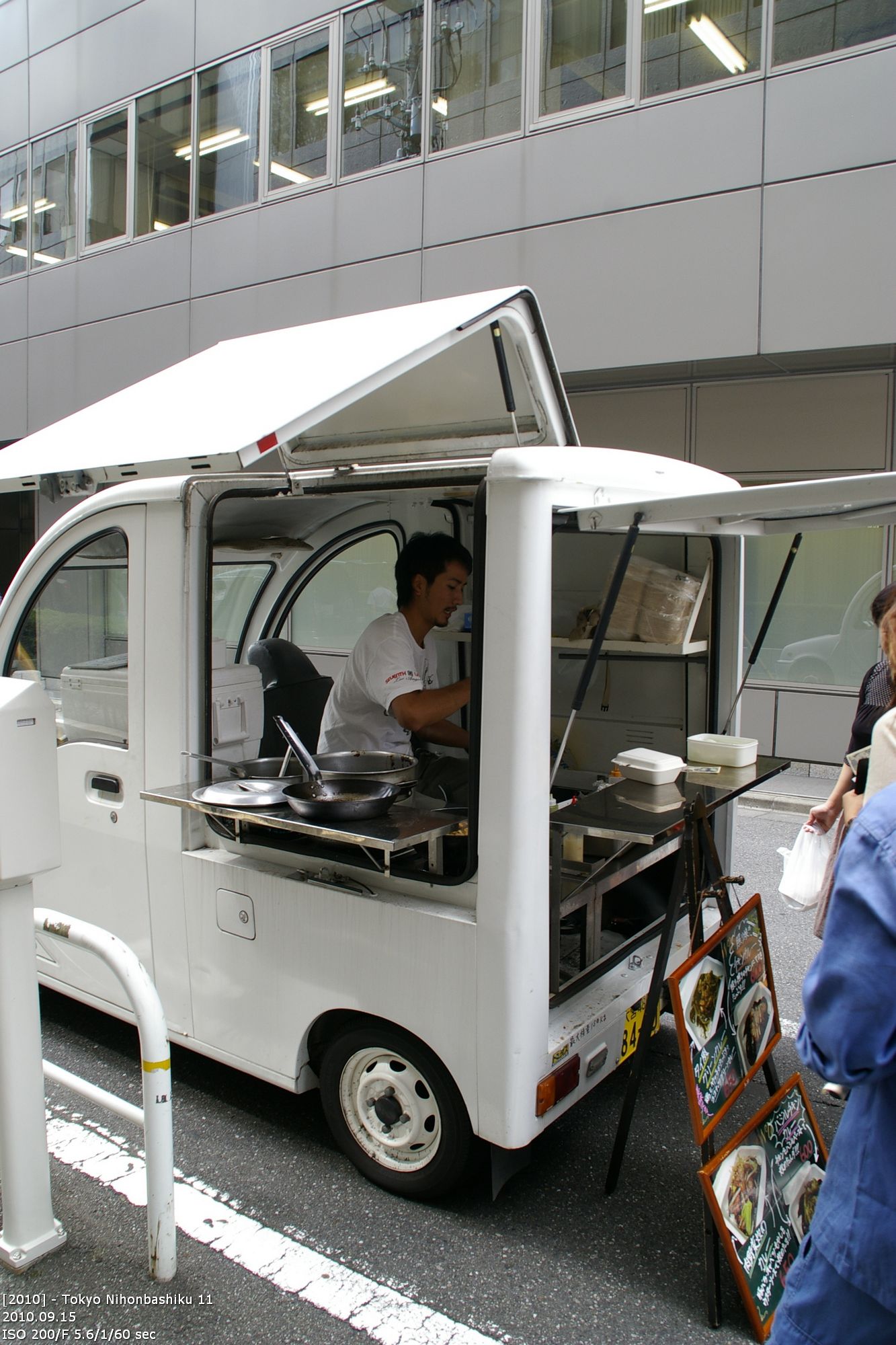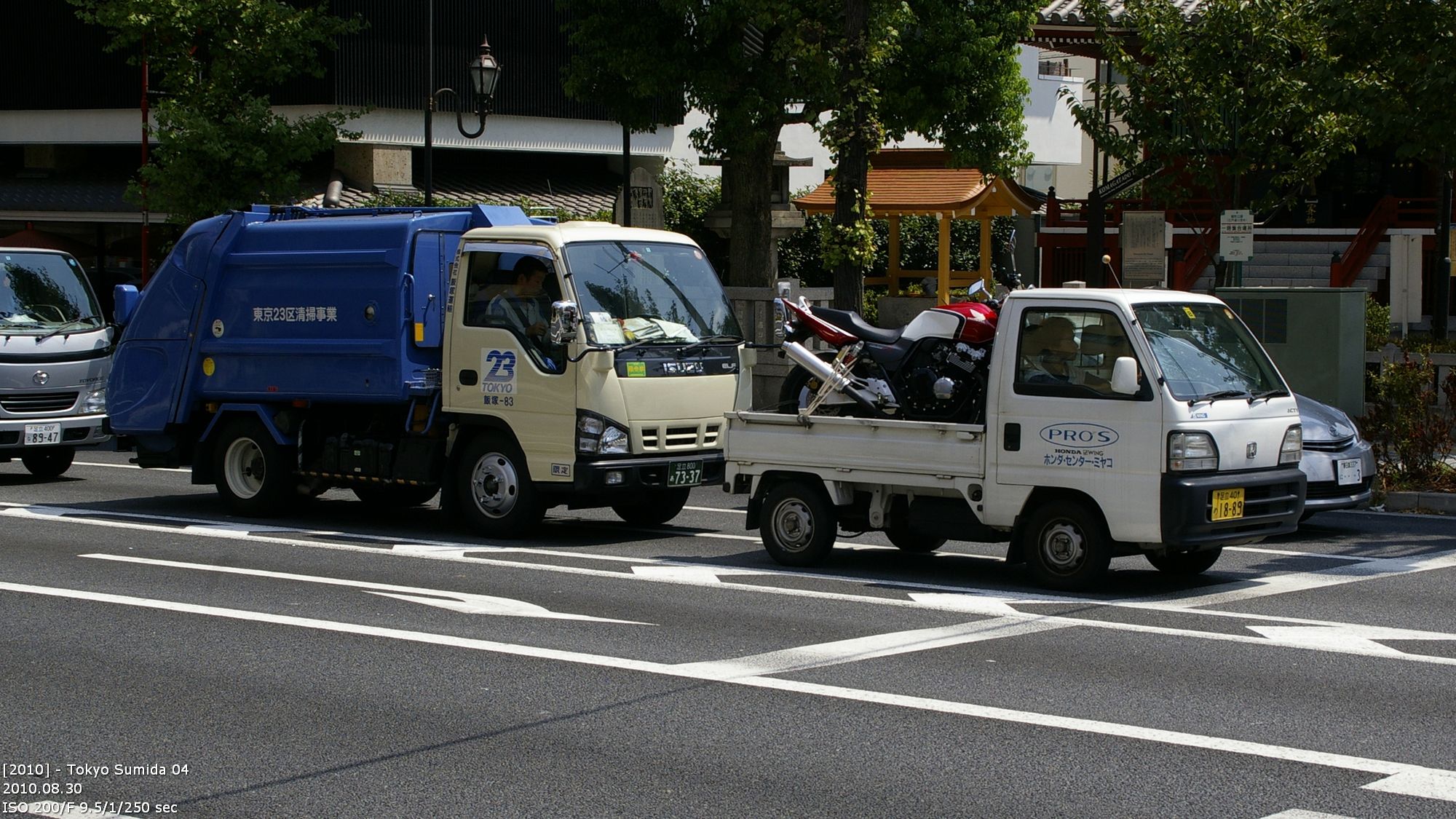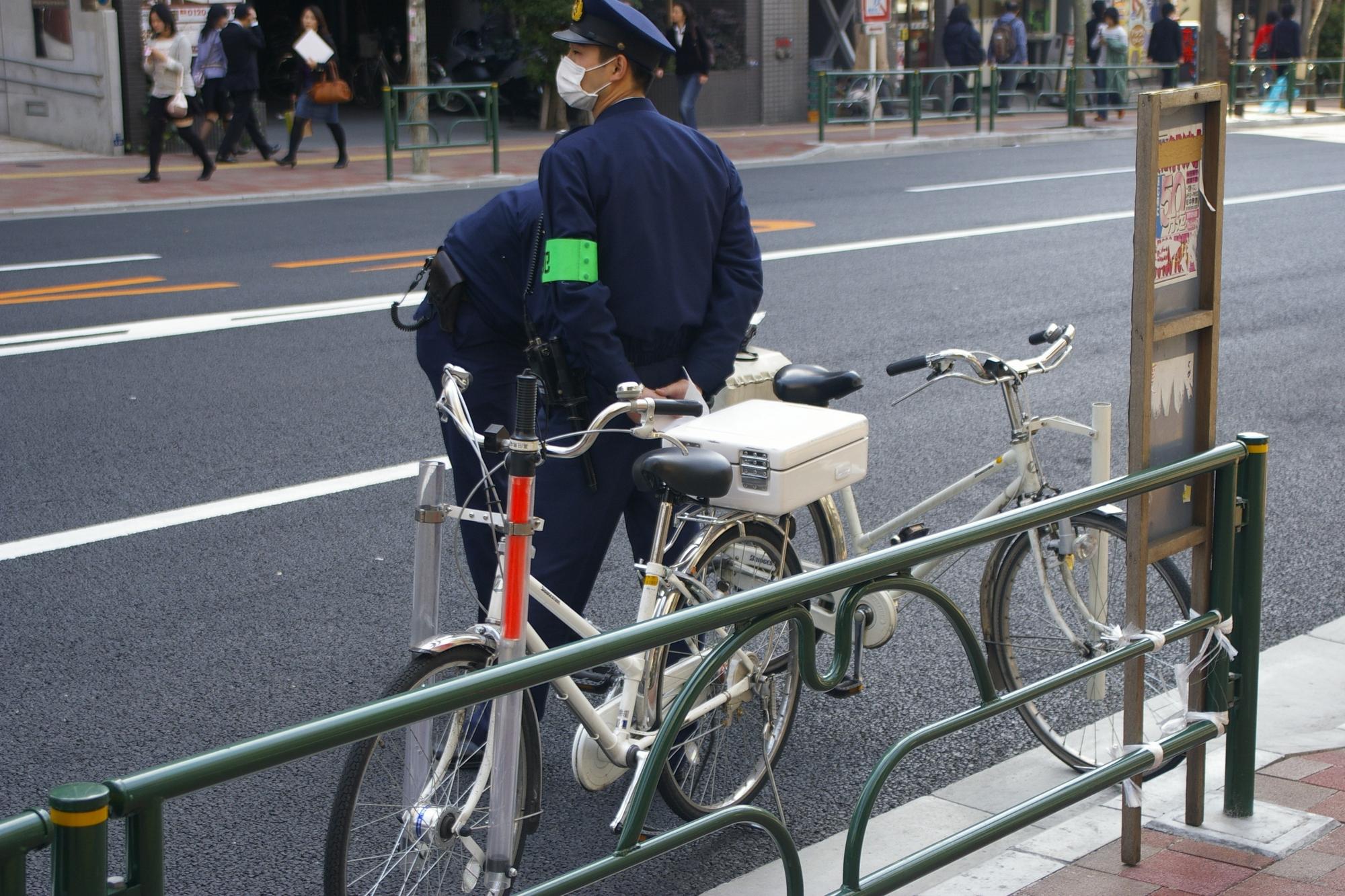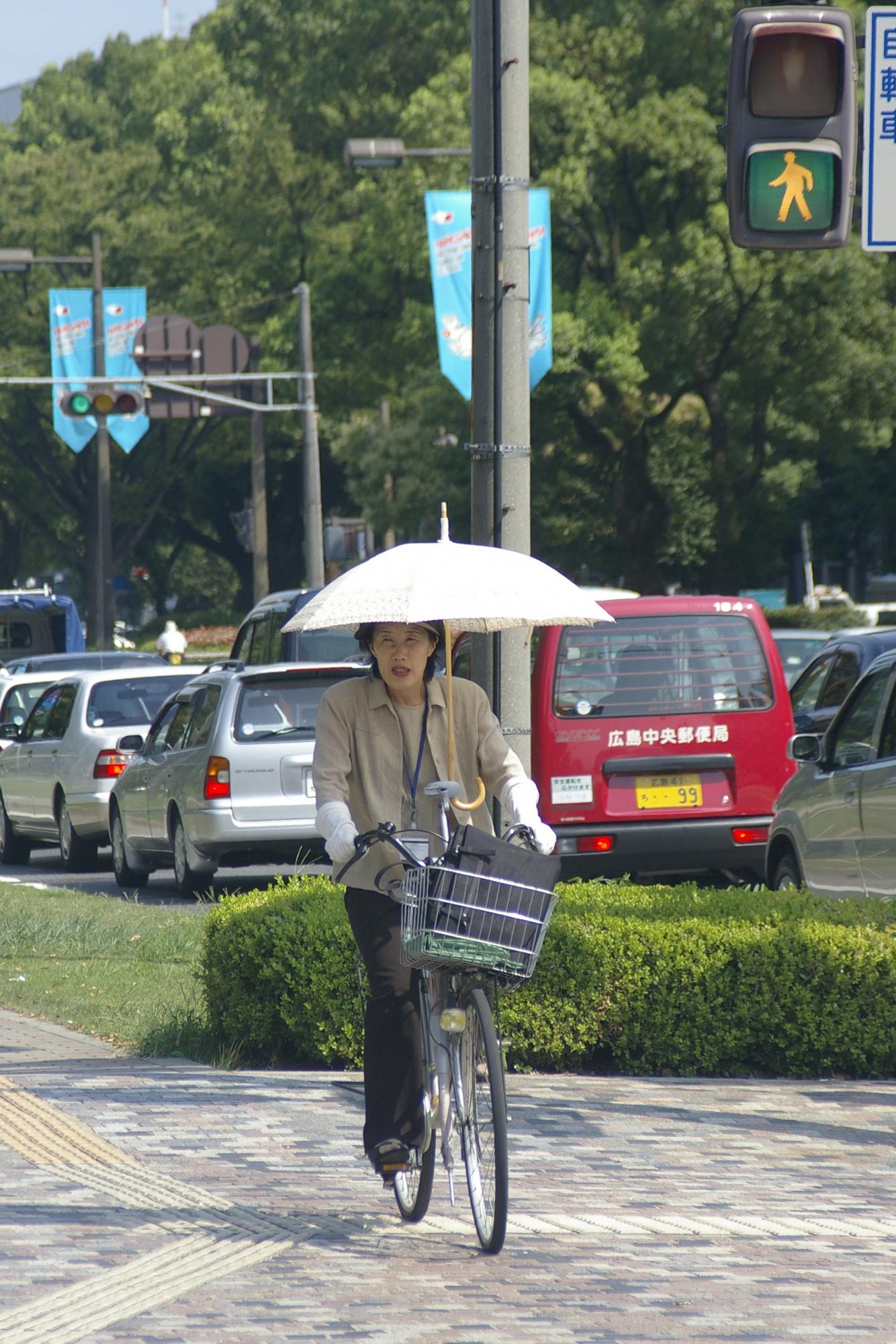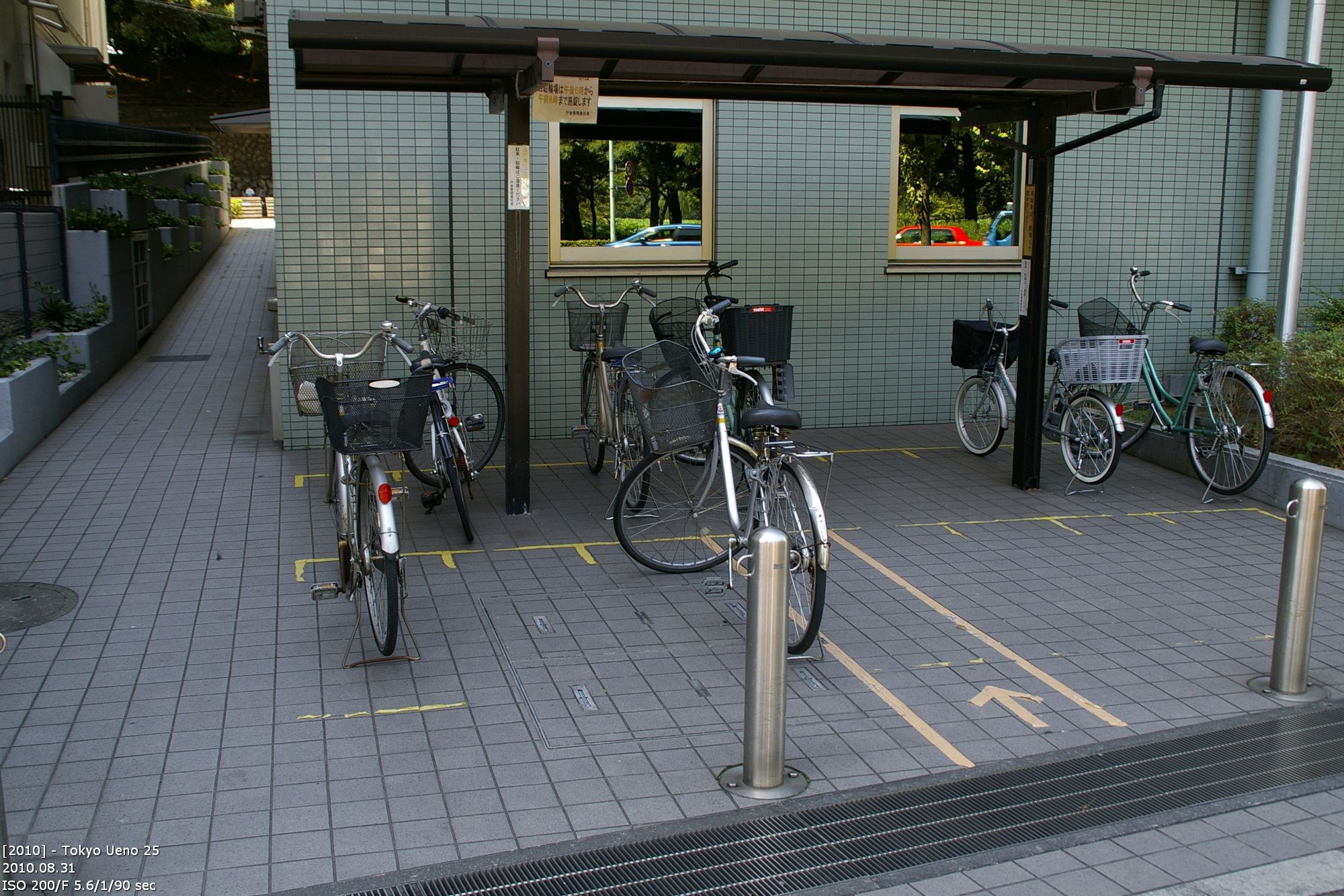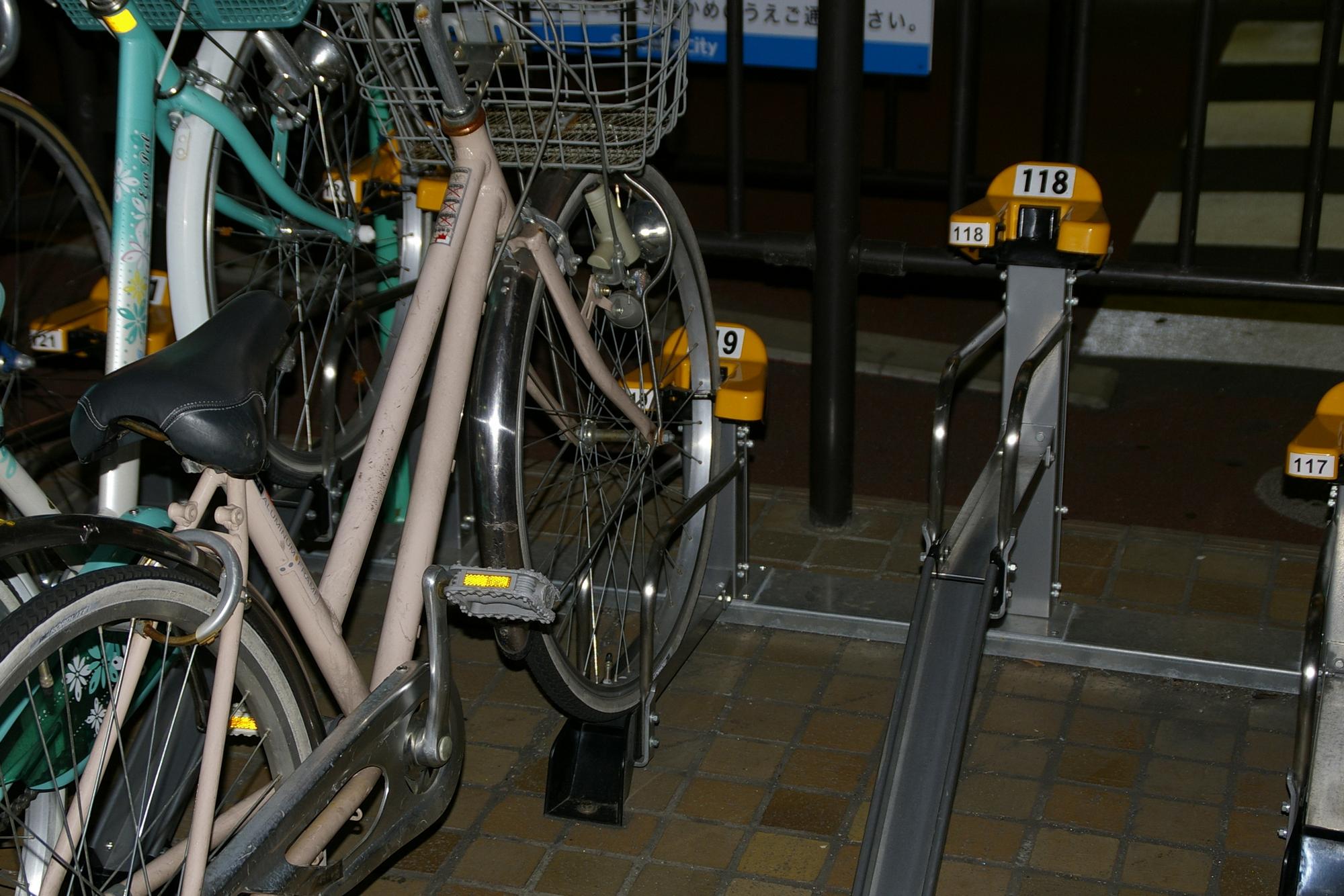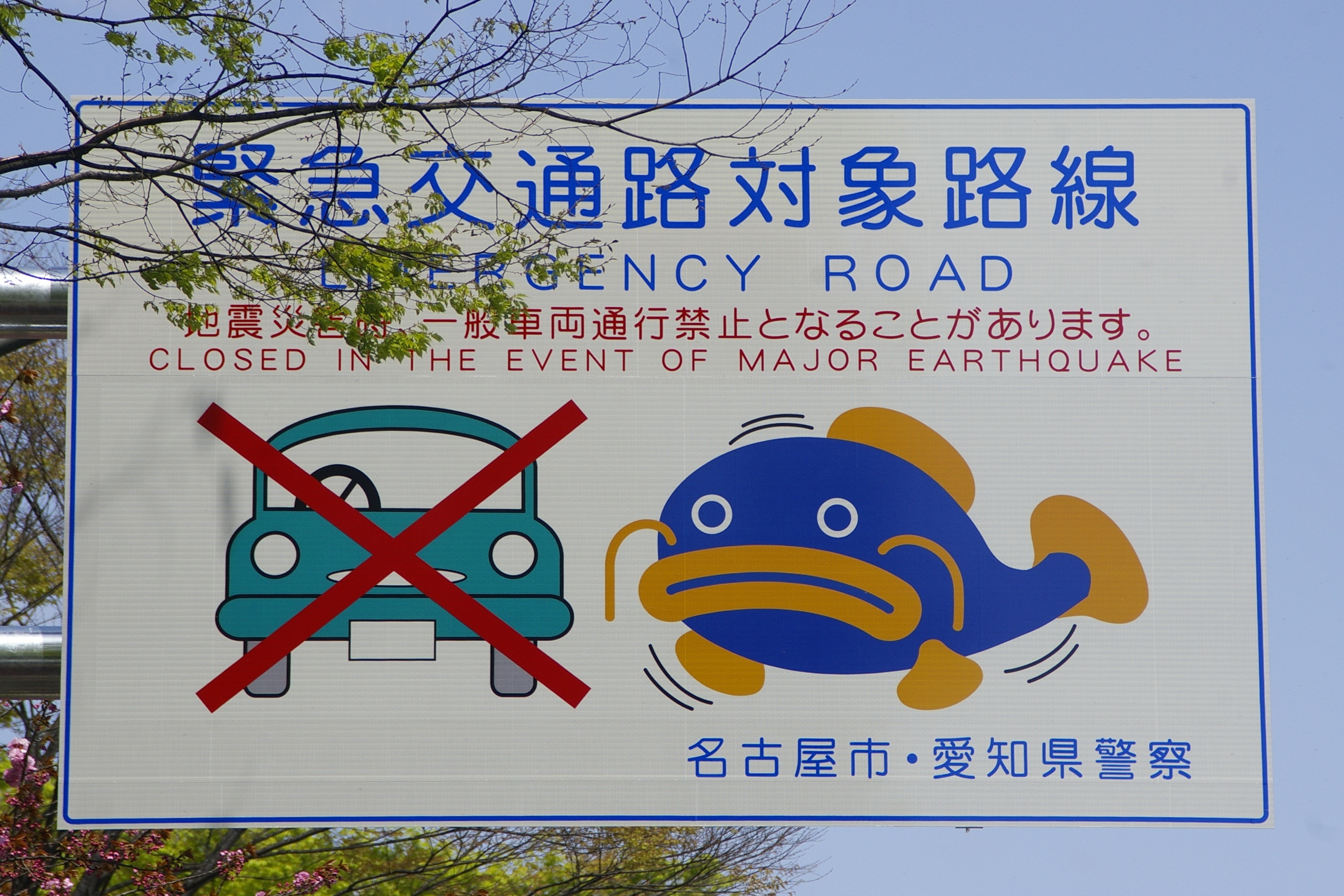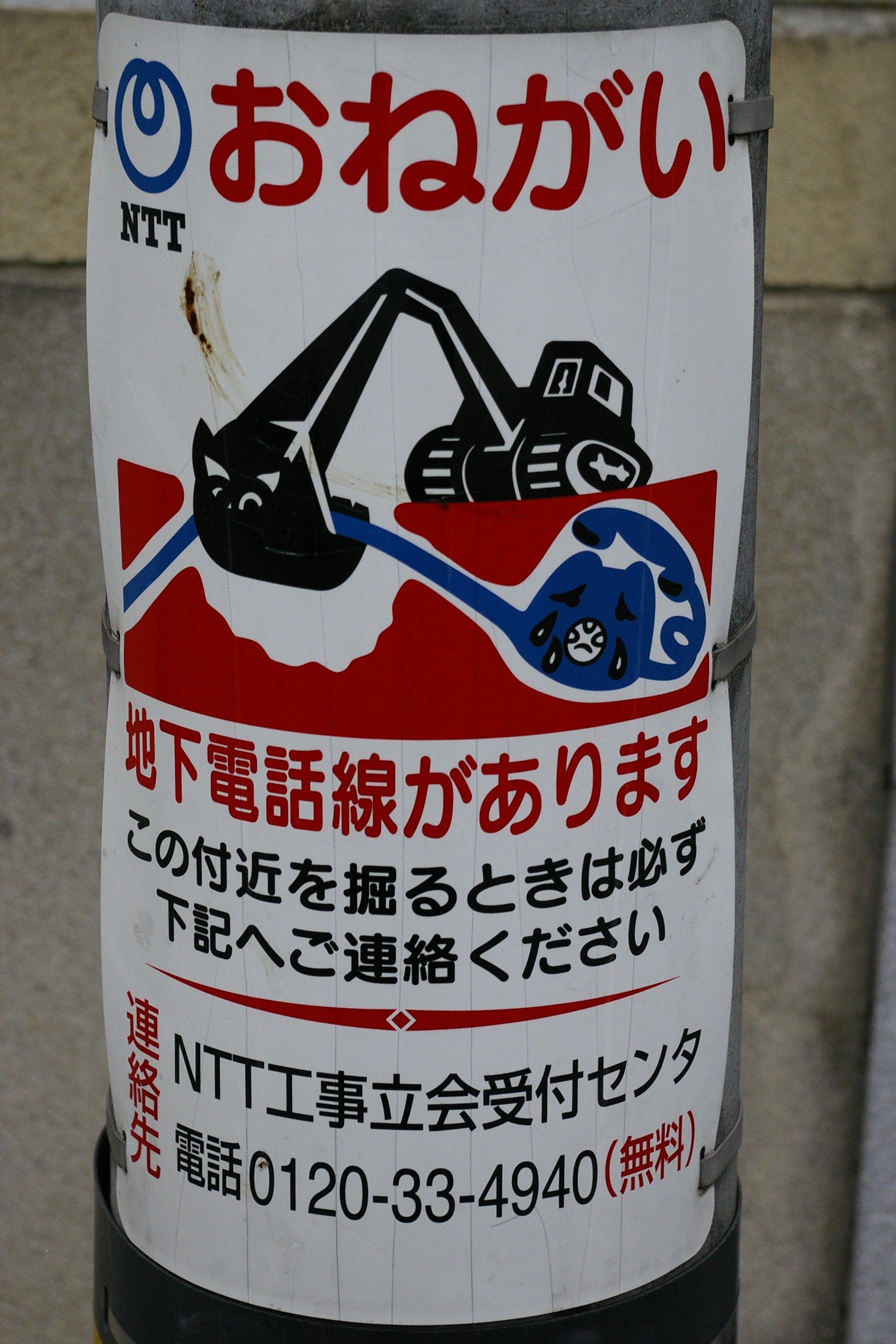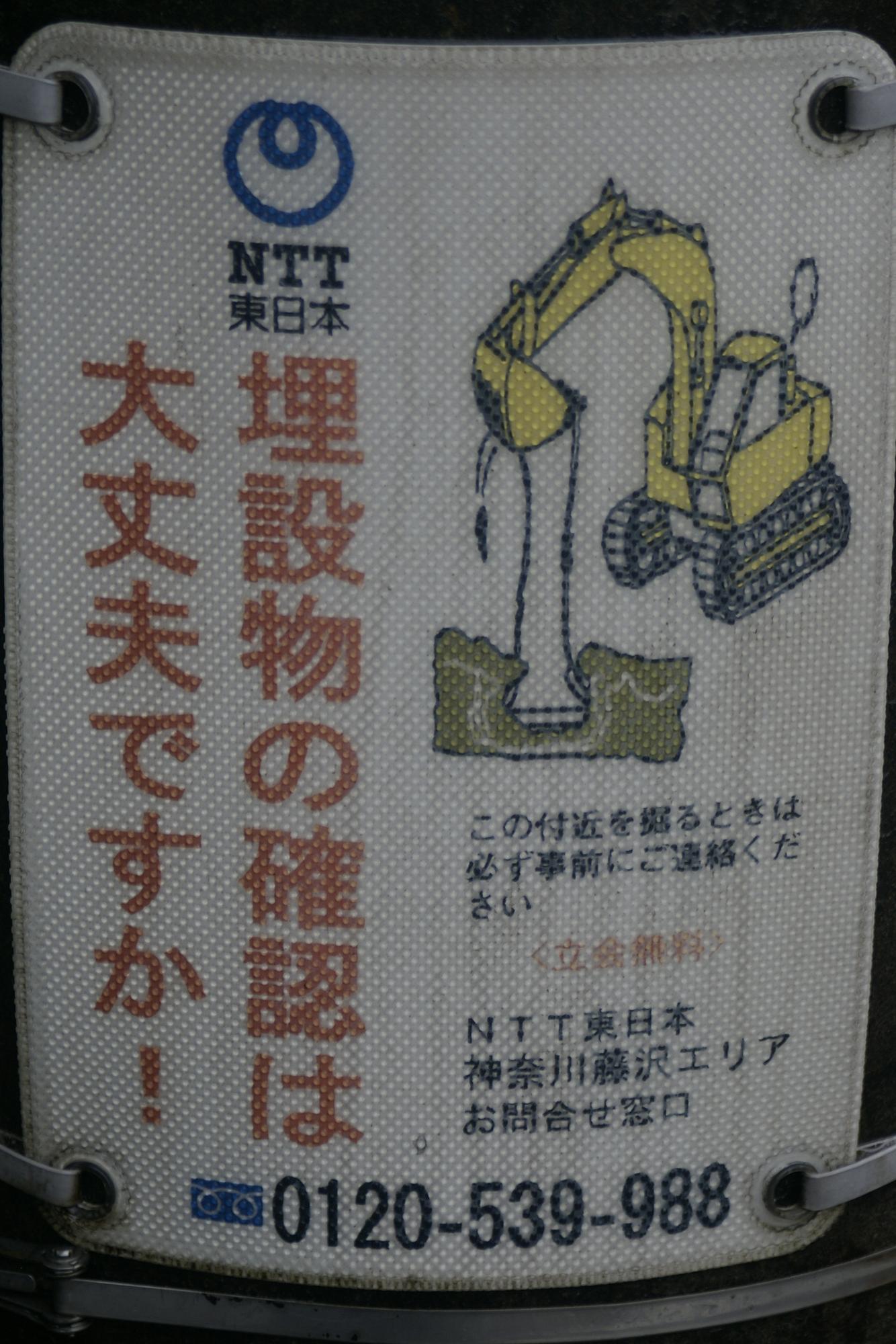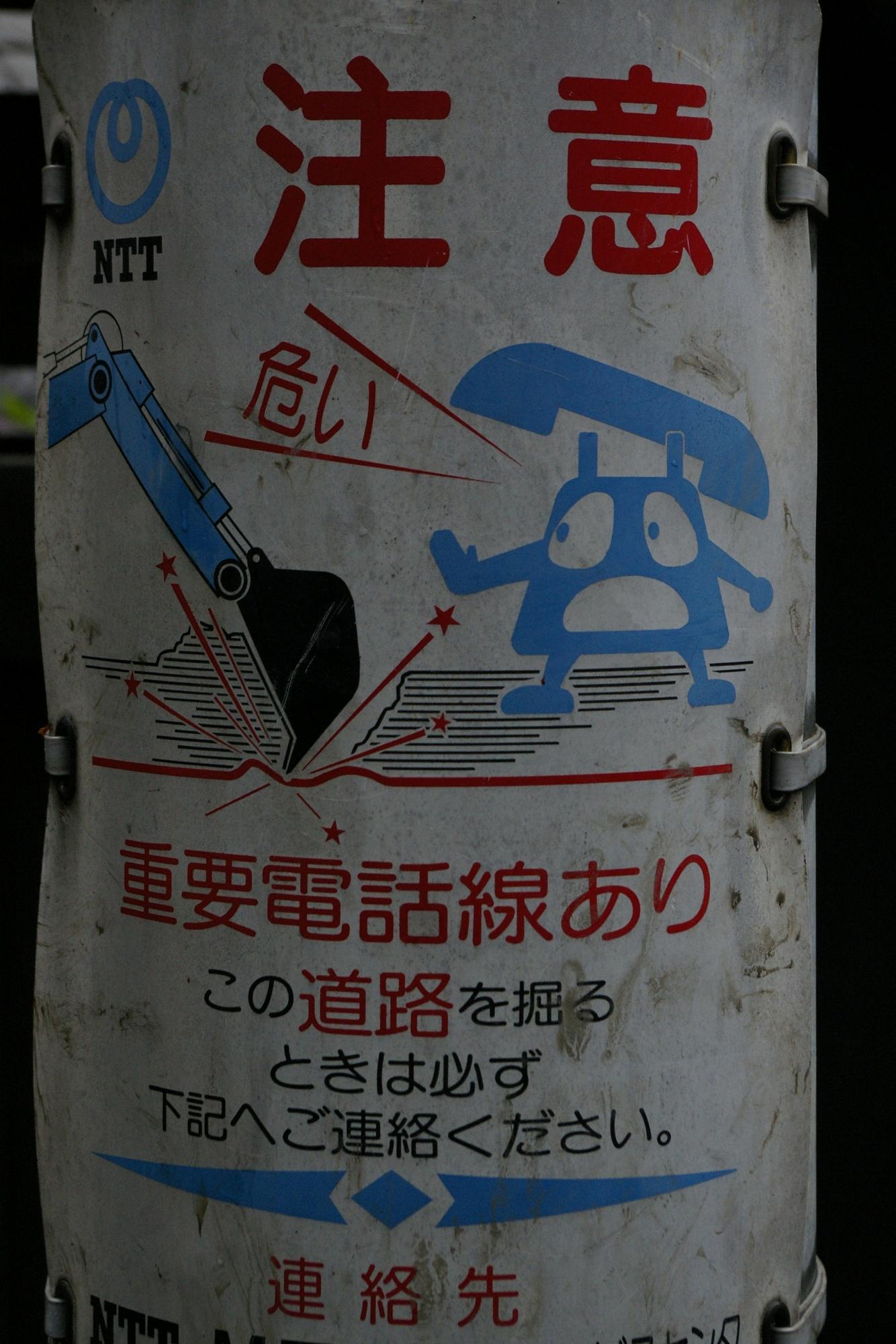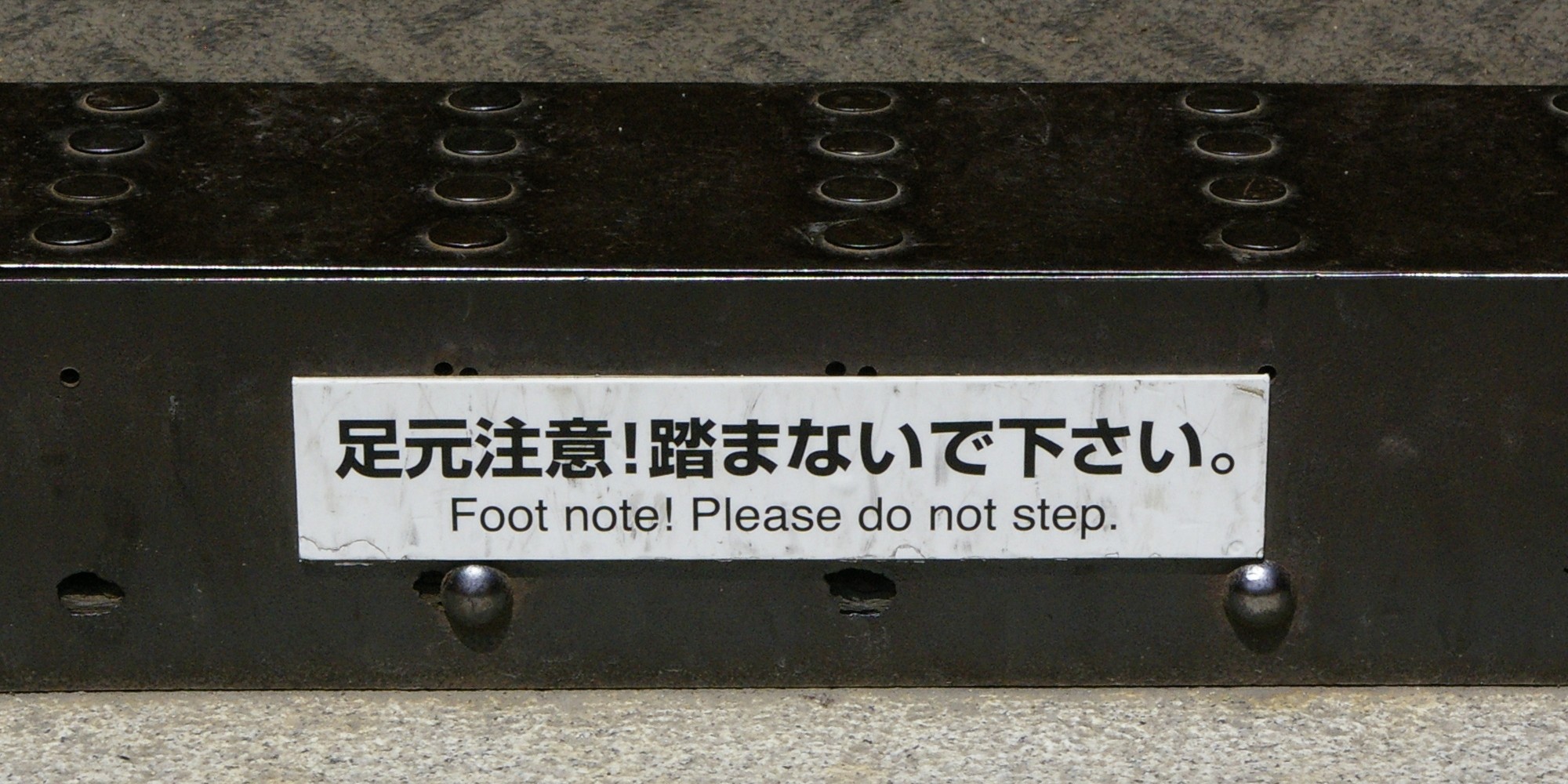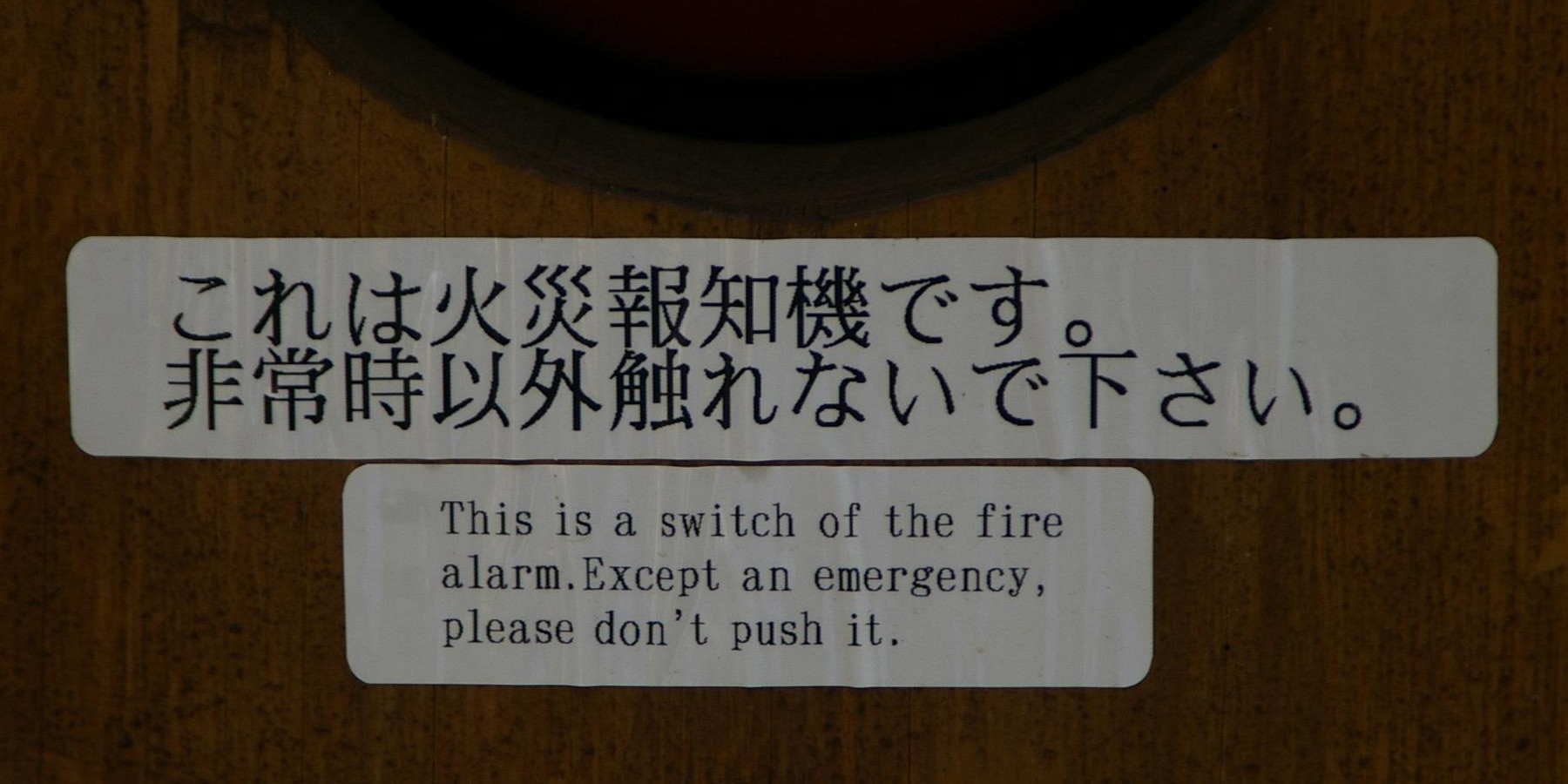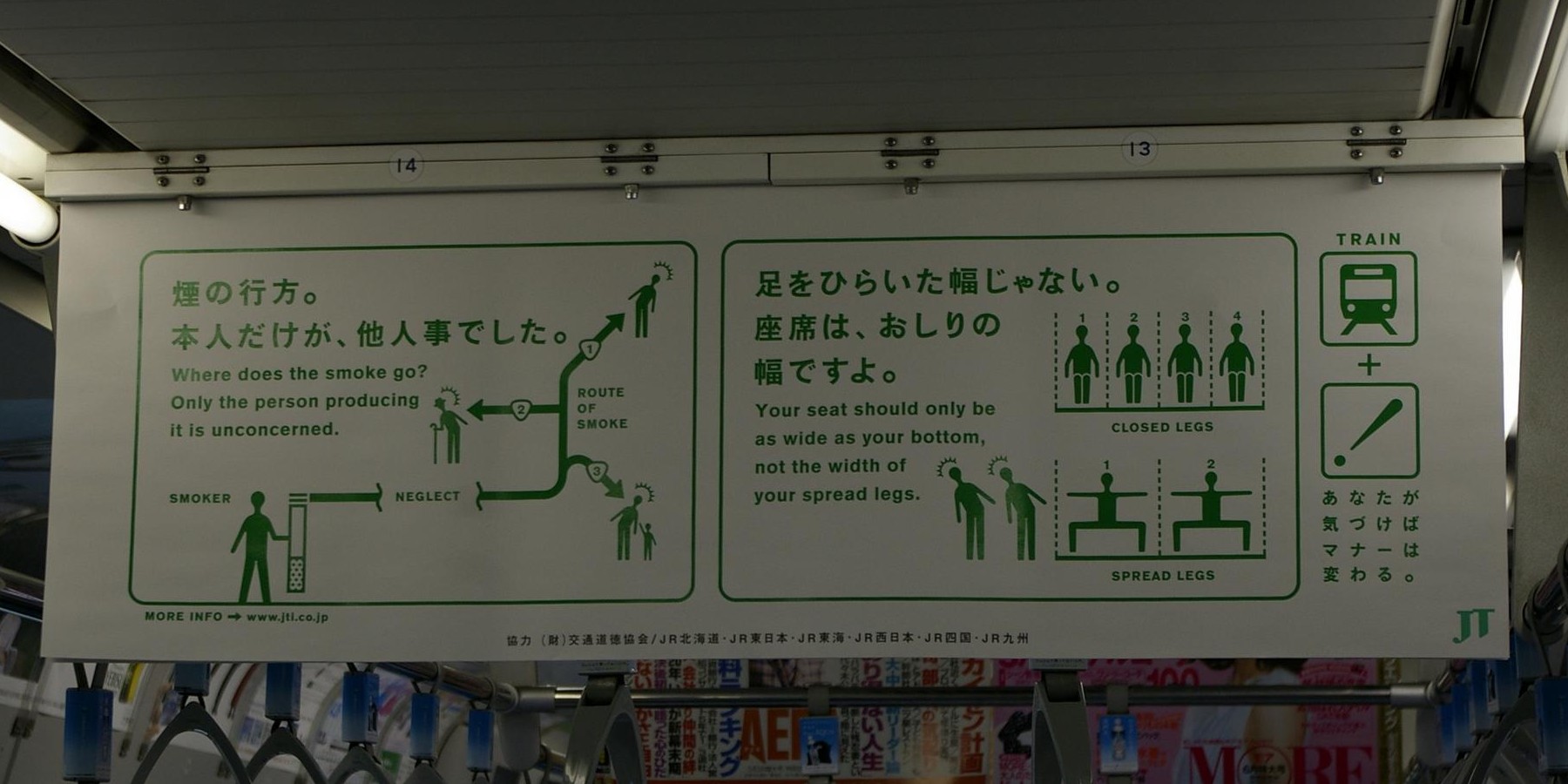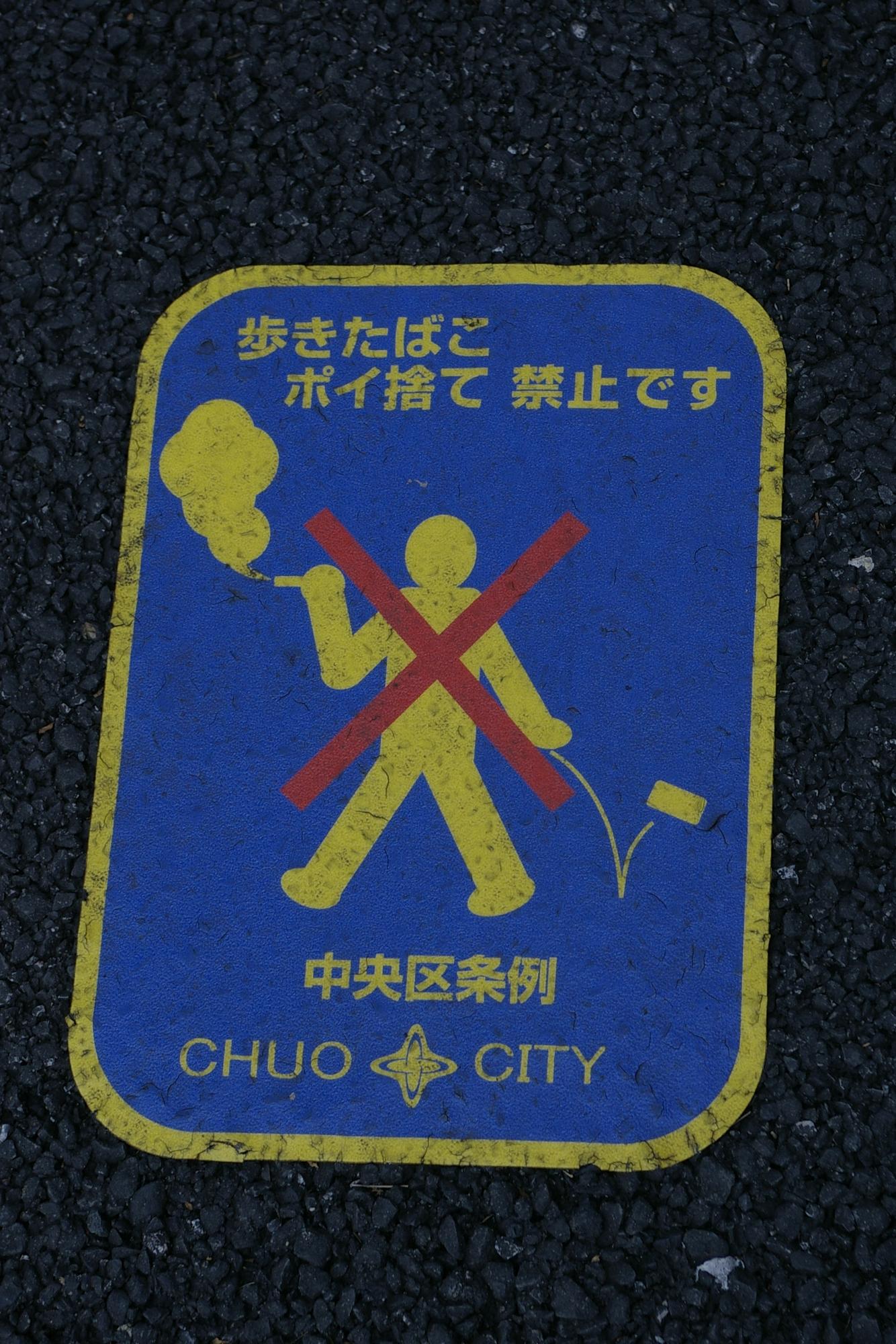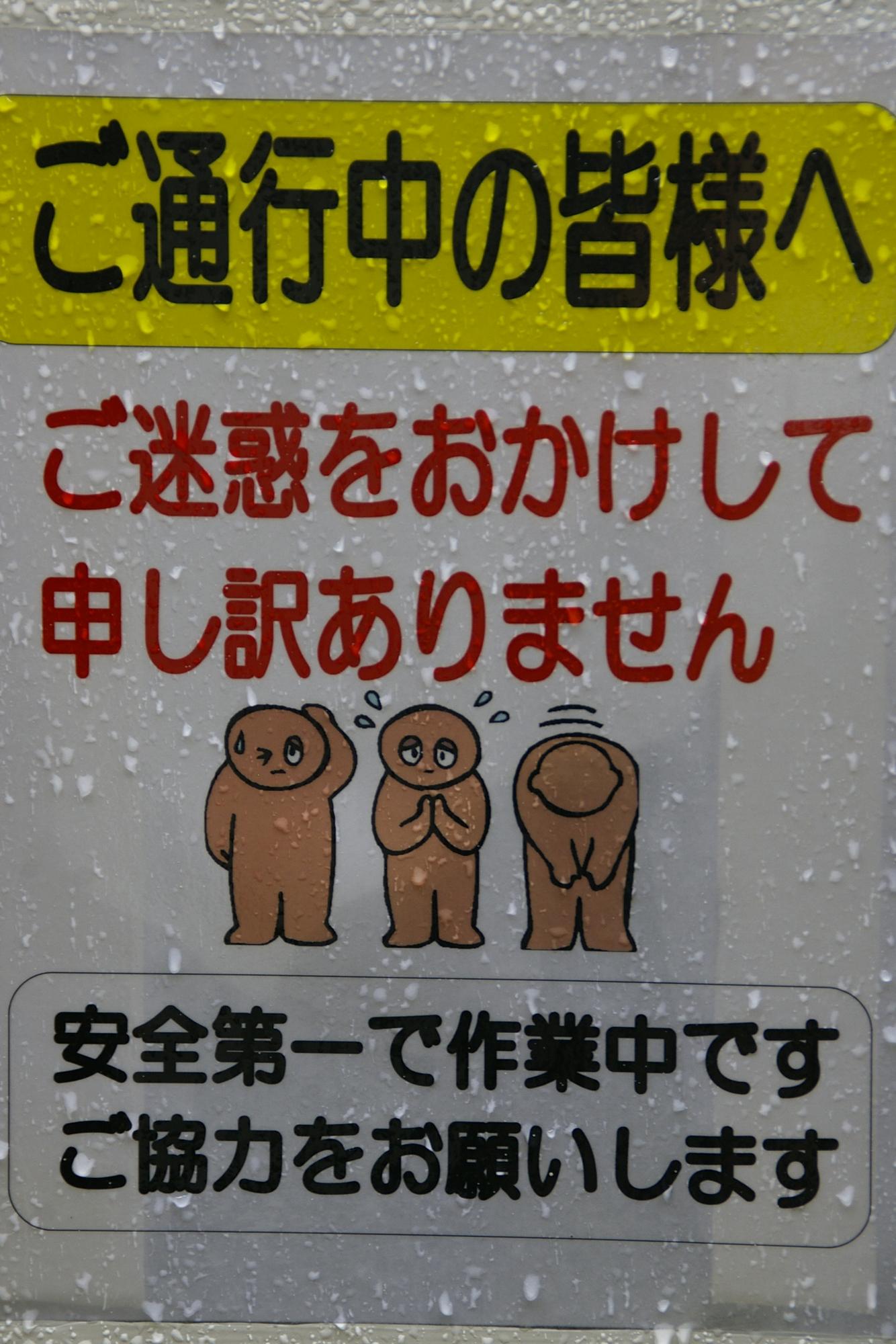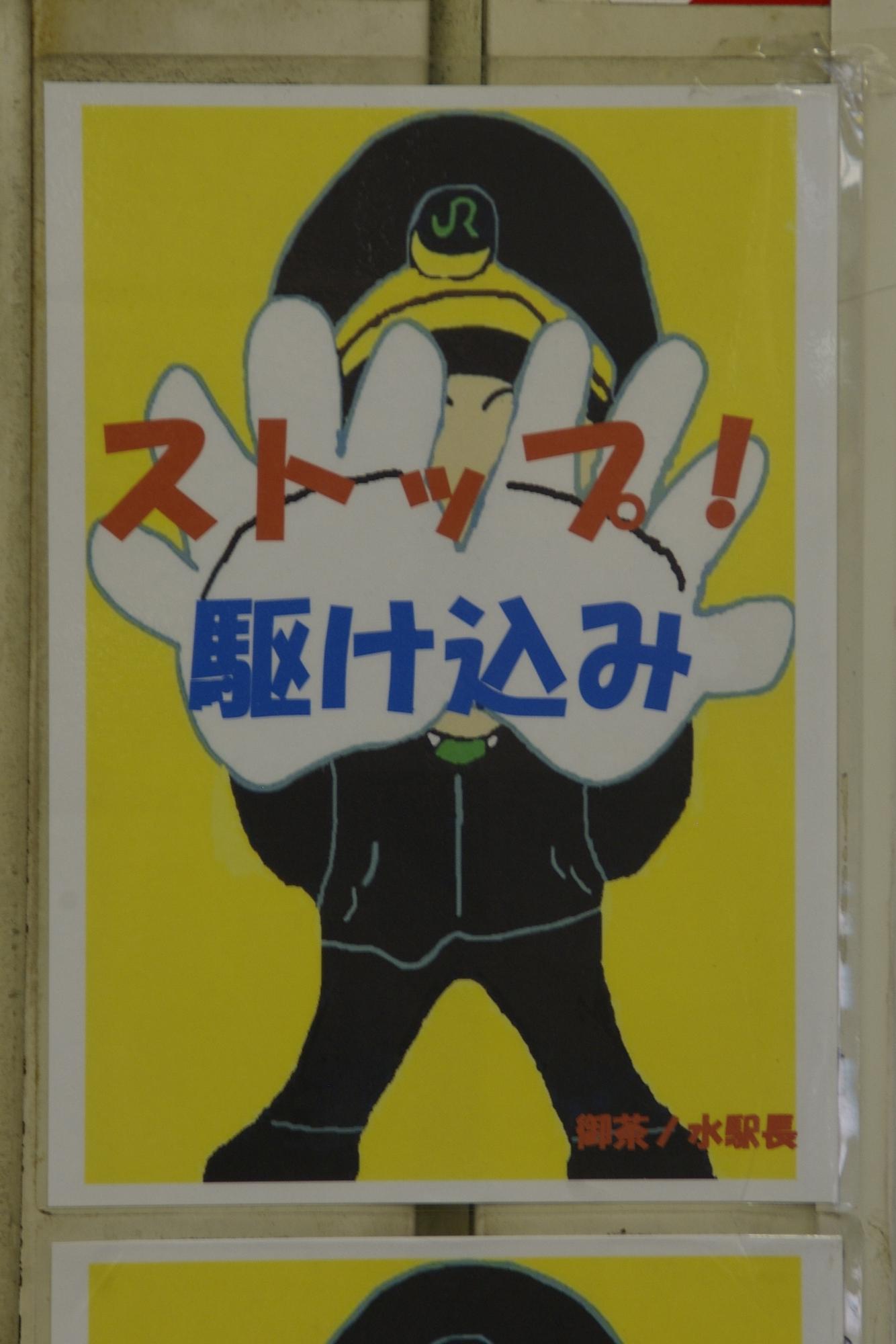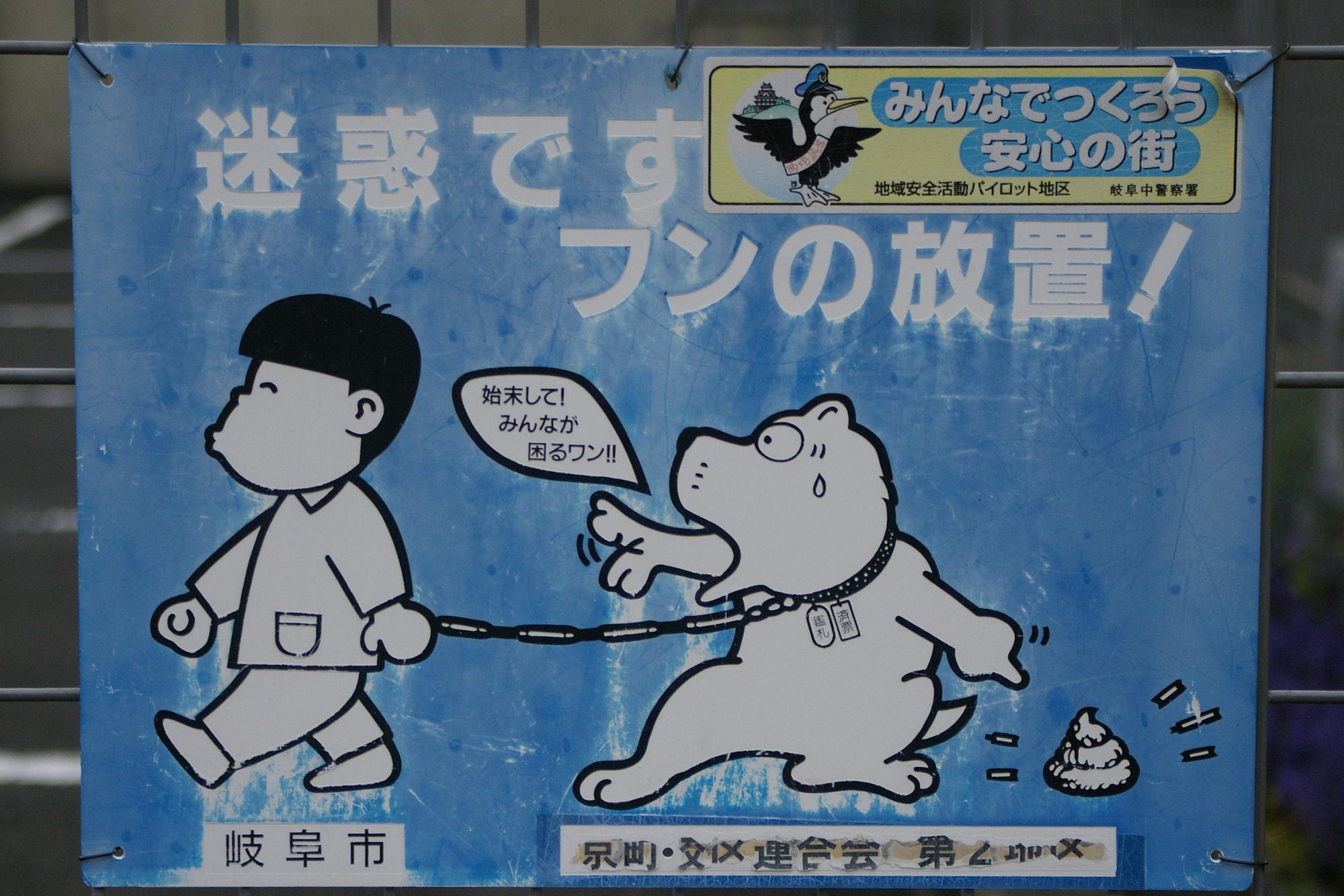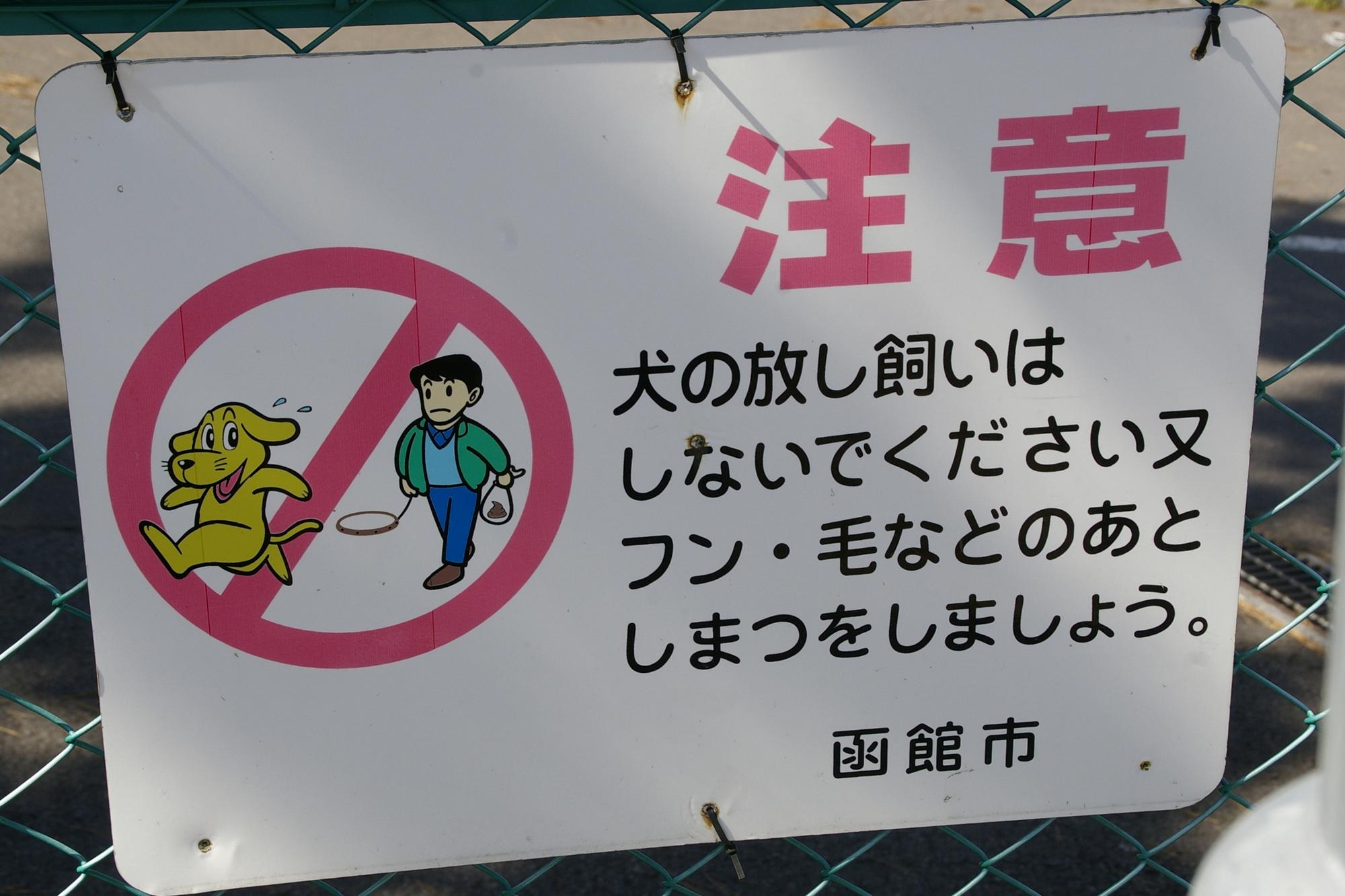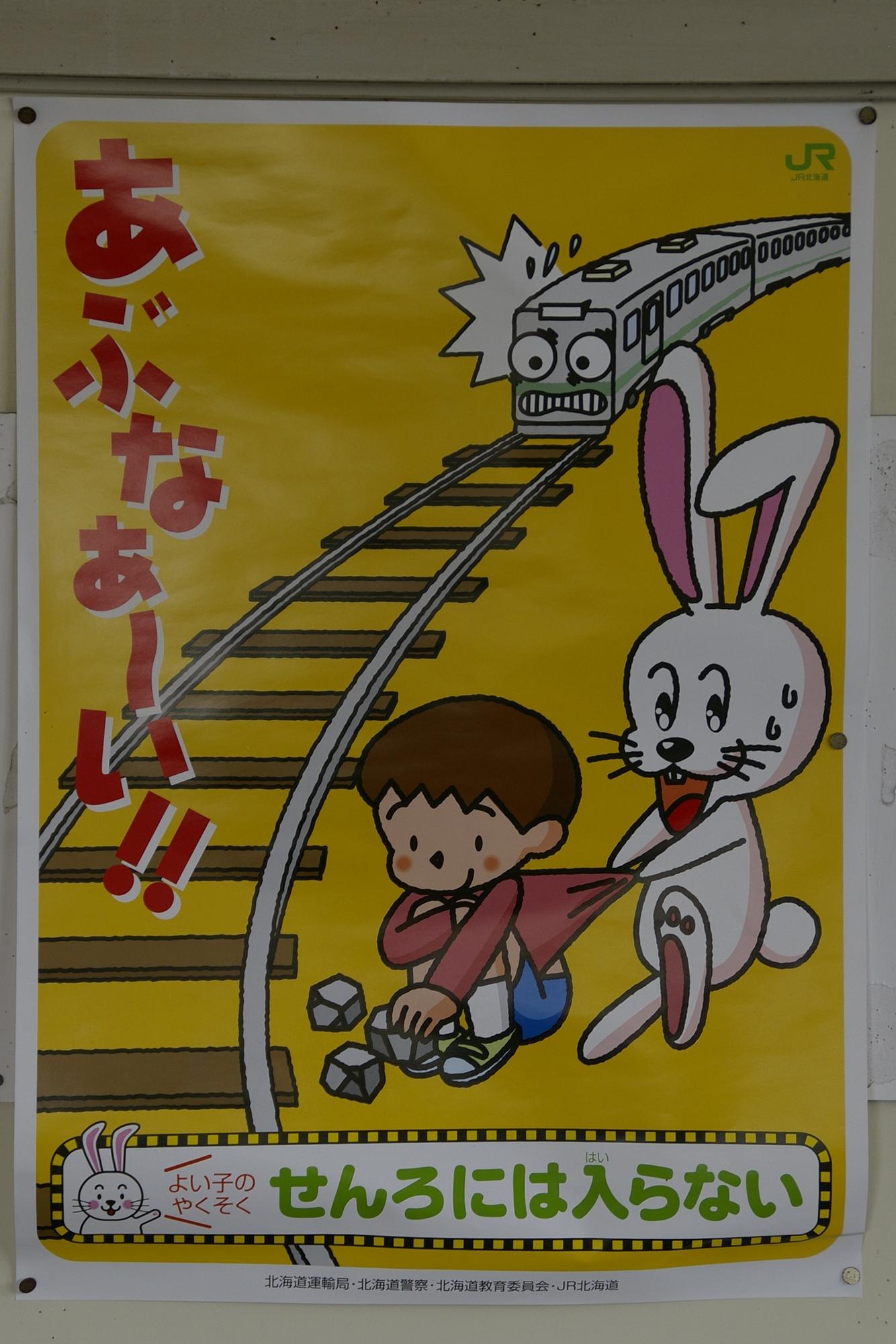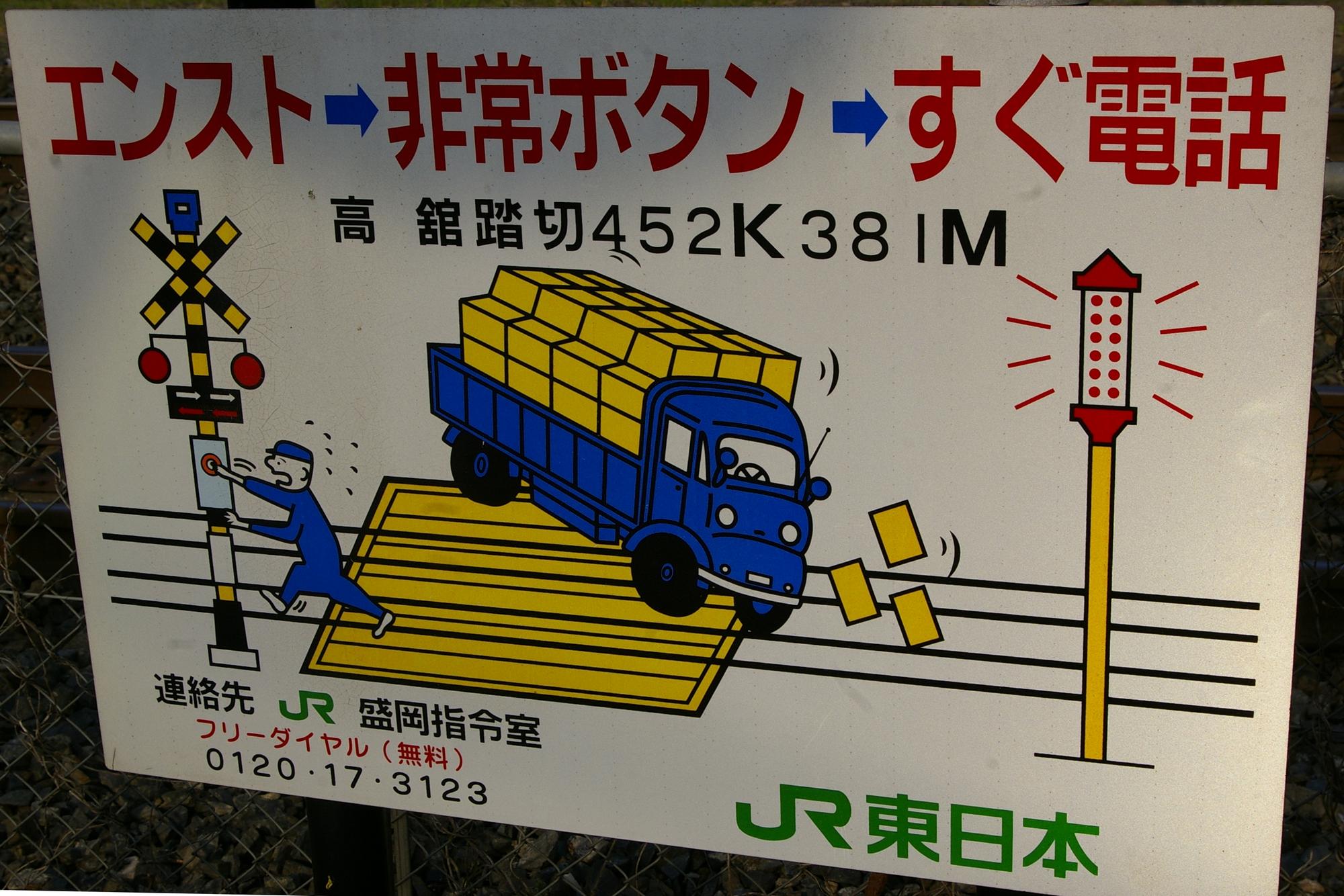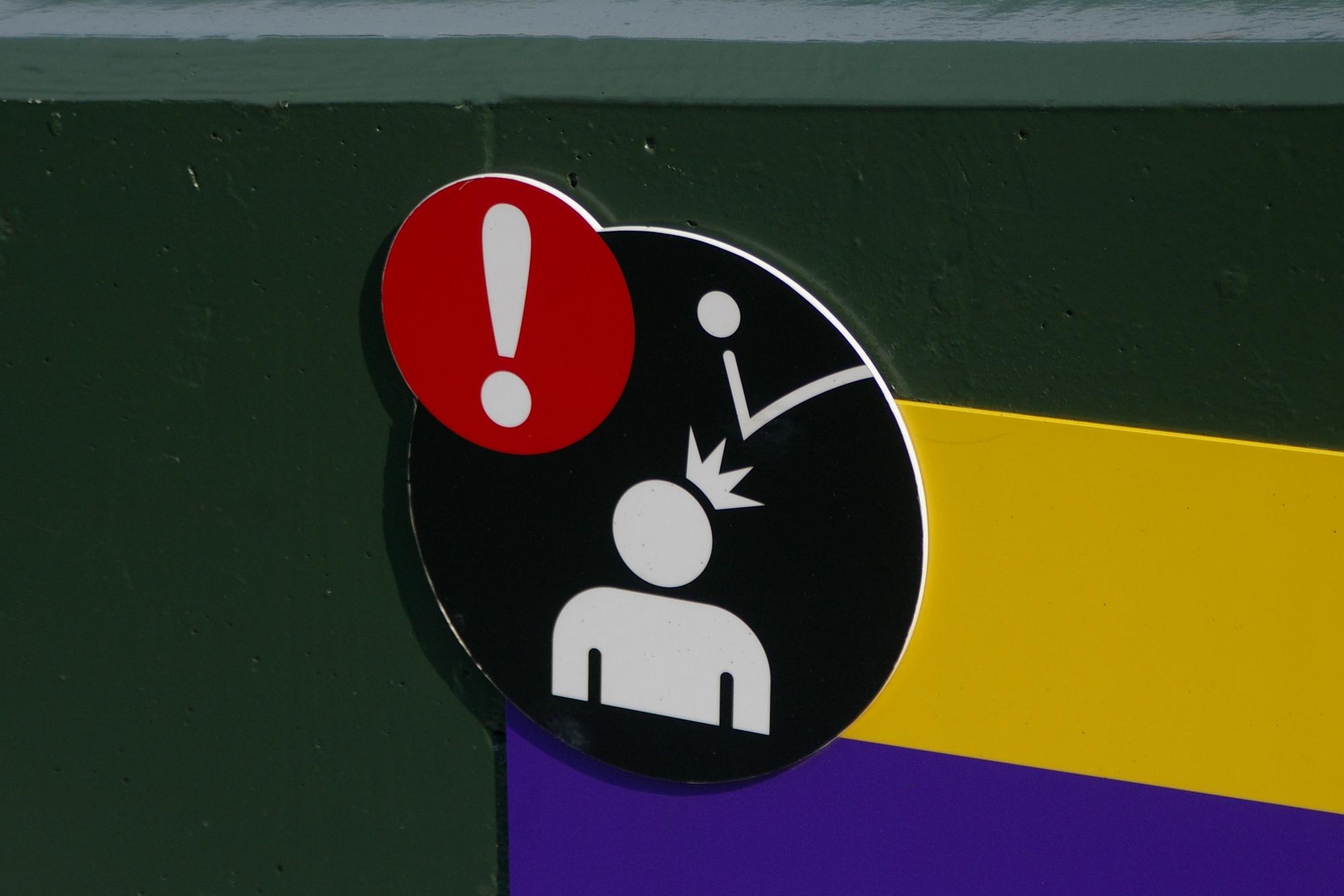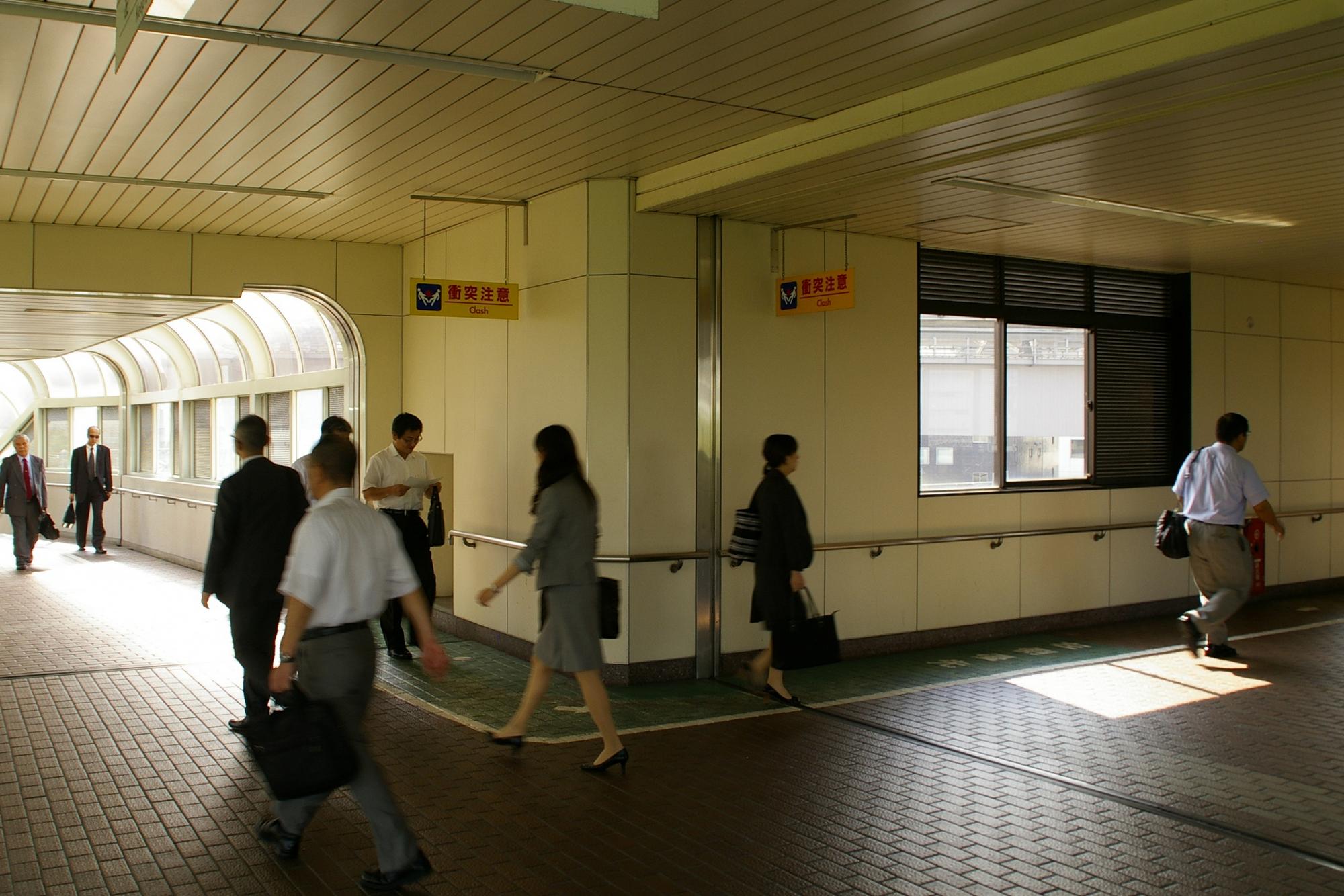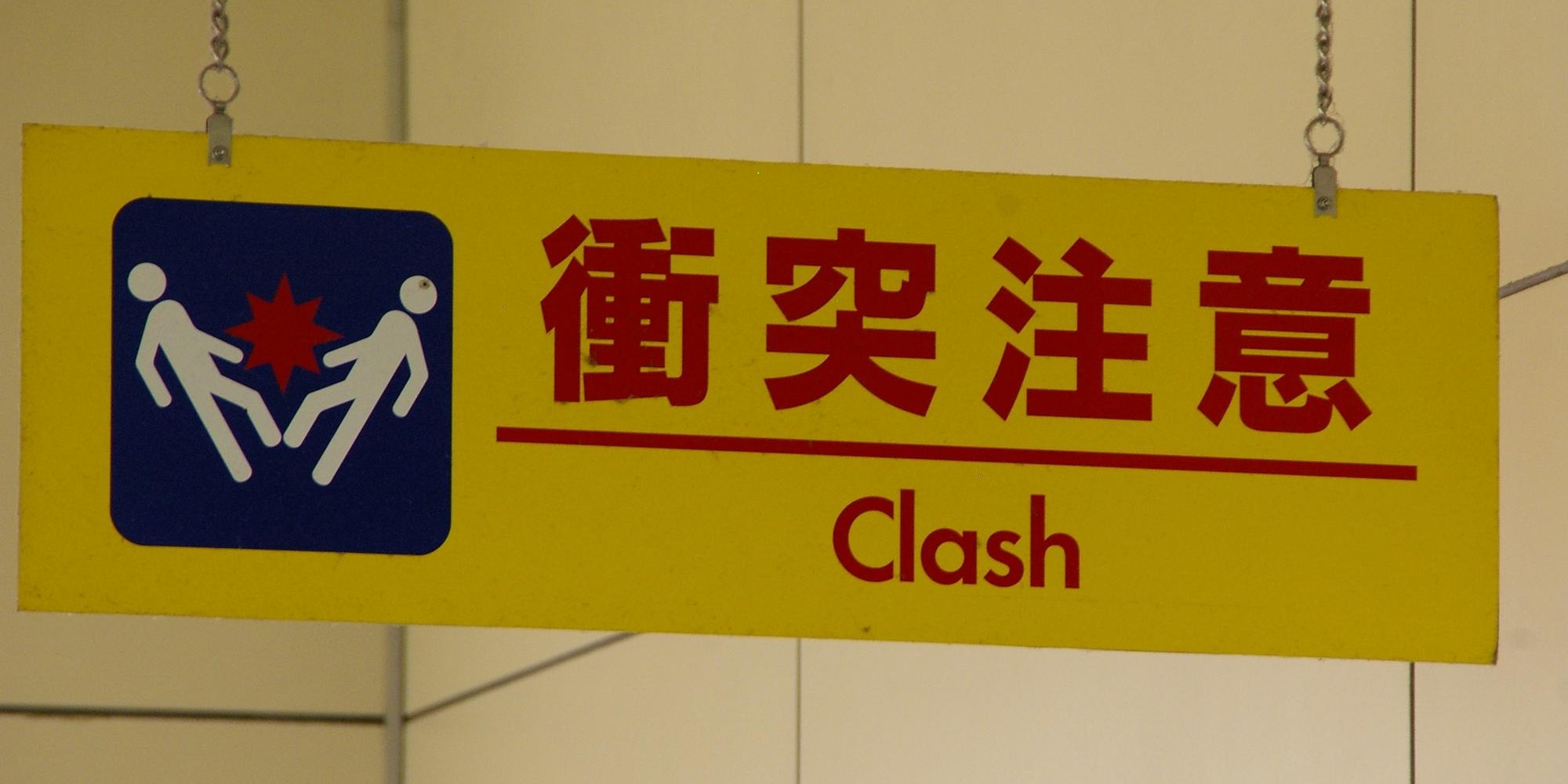Koban, with a long o, is a police box; a tiny police station with usually one or two officers. The boxes are a big benefit for tourists. They are everywhere. Every block has a least one. Because there are no house number (and if there are, there is no logical order), the koban is possibly the only place where you can get help to find the house you are looking for. Sometimes there are street maps that will help you. Finding a koban is easier.
Koban in Ueno
Koban are also helpful if you got yourself lost in Tokyo. The description of the way back to the hotel always is to complex for my knowledge of Japanese. I tried it and gave up. Therefore it was easiert to ask for the next koban on the way. Then I asked the next koban for the next koban, and so on. Usually there is a koban every quarter mile.
Finding a koban
A koban is easy to find. At night there are two red lights. Ok, at daylight it is a little more difficult. Usually there is a police officer standing in front of the koban. Looking for an American cop? Donut shop. Looking for a German Cop? Döner Shop. Looking for a Japanese Cop? Standing in front of a koban. Typically Japanese. Often you can also see the white bicylces.
The frog
Some koban are really well camouflaged. The one in Taito had a big japanese police stick mounted on the wall. It more looked like a souvenir shop. On Ginza the koban was some kind of an attraction. There was a big plastic frog on the roof. (The frog was gone 2010.) Because police boxes are everywhere, they are also the aim of architects., like this one in Ueno park.
More about this topic, if I have more pictures and informations.

